Fujifilm vs Hasselblad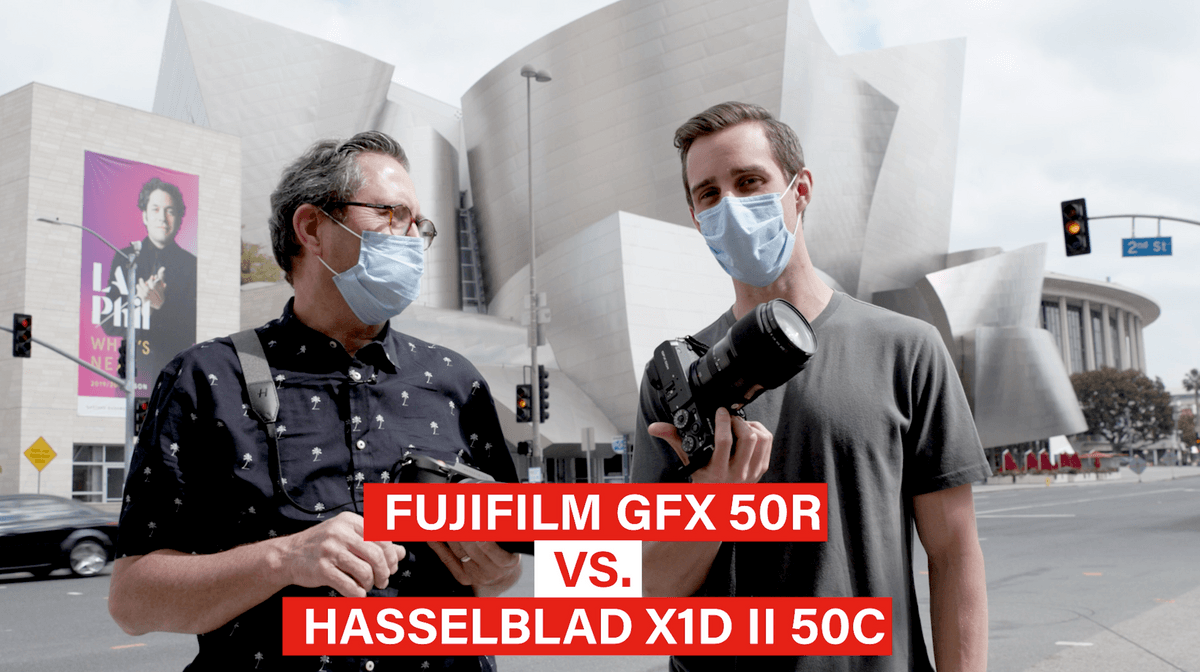
Today we will take a look at 2 cameras in the medium format range. We will take a look the Fujifilm GFX 50R and the Hasselblad X1D II 50C. (We used the Fuji GF 50mmf/3.5 and the Hasselblad XCD 45mm f/3.5 lenses.)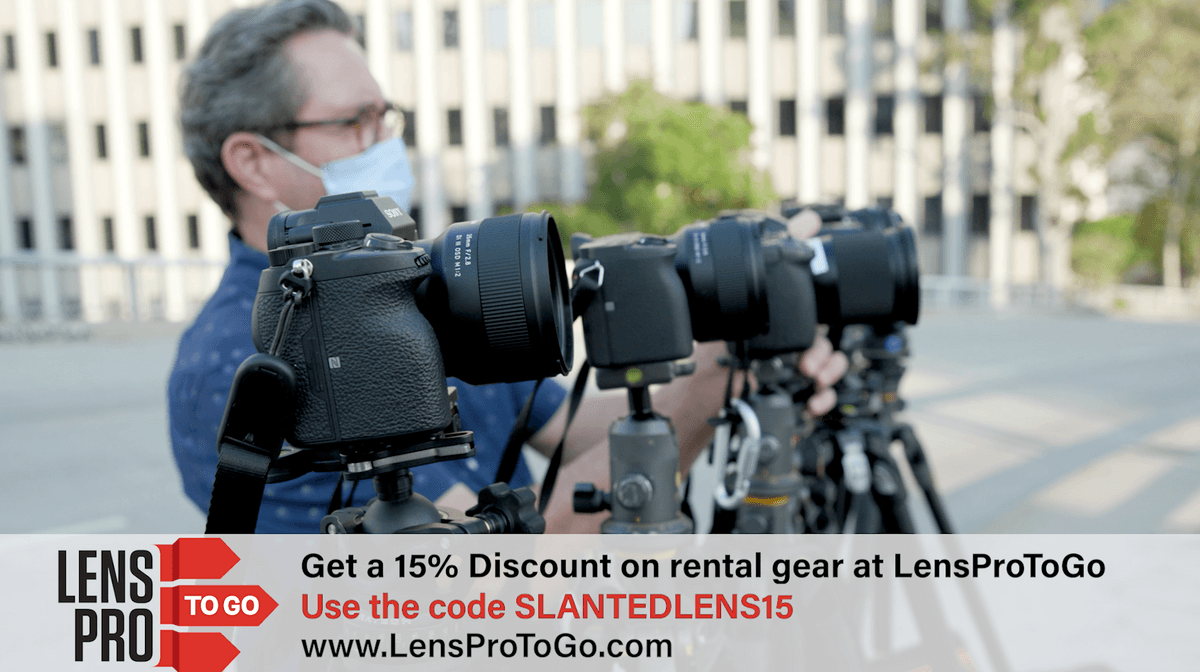
Special thanks to LensProToGo for providing the cameras and lenses! (Use the code SLANTEDLENS15 to get a 15% discount code at LensProToGo.com.)
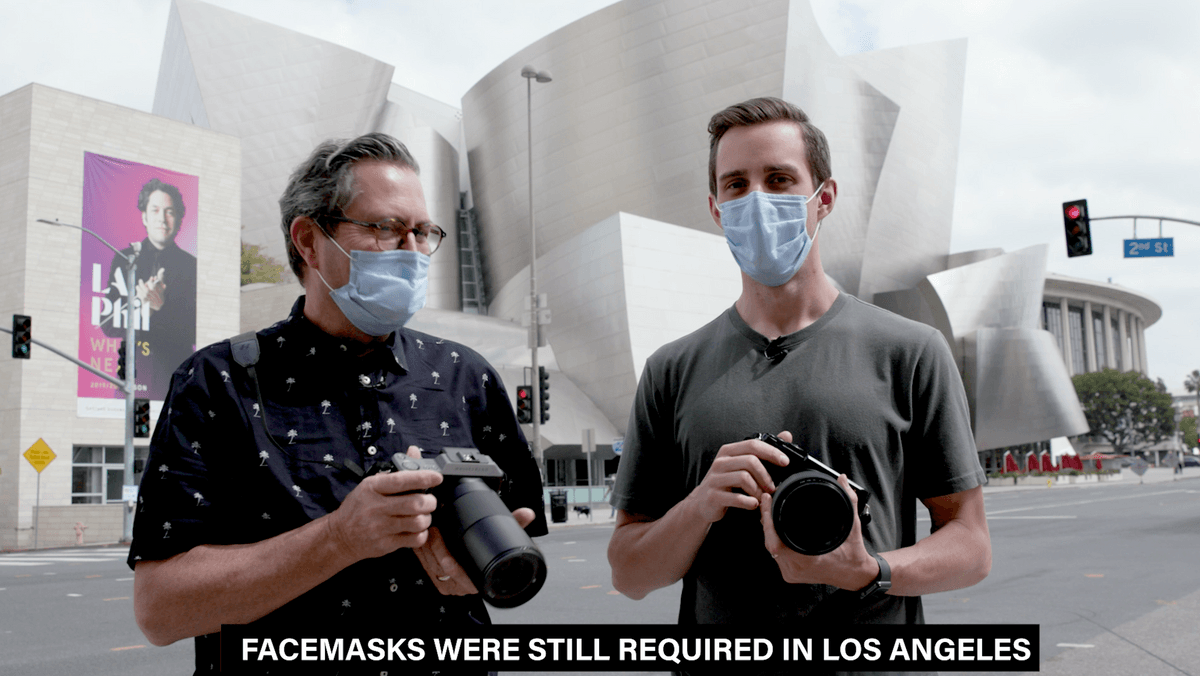 The Fujifilm is kind of like a smaller version of the 50S. It is similar in almost every way except the body style. It’s almost like a giant rangefinder camera which is kind of funny.
The Fujifilm is kind of like a smaller version of the 50S. It is similar in almost every way except the body style. It’s almost like a giant rangefinder camera which is kind of funny.
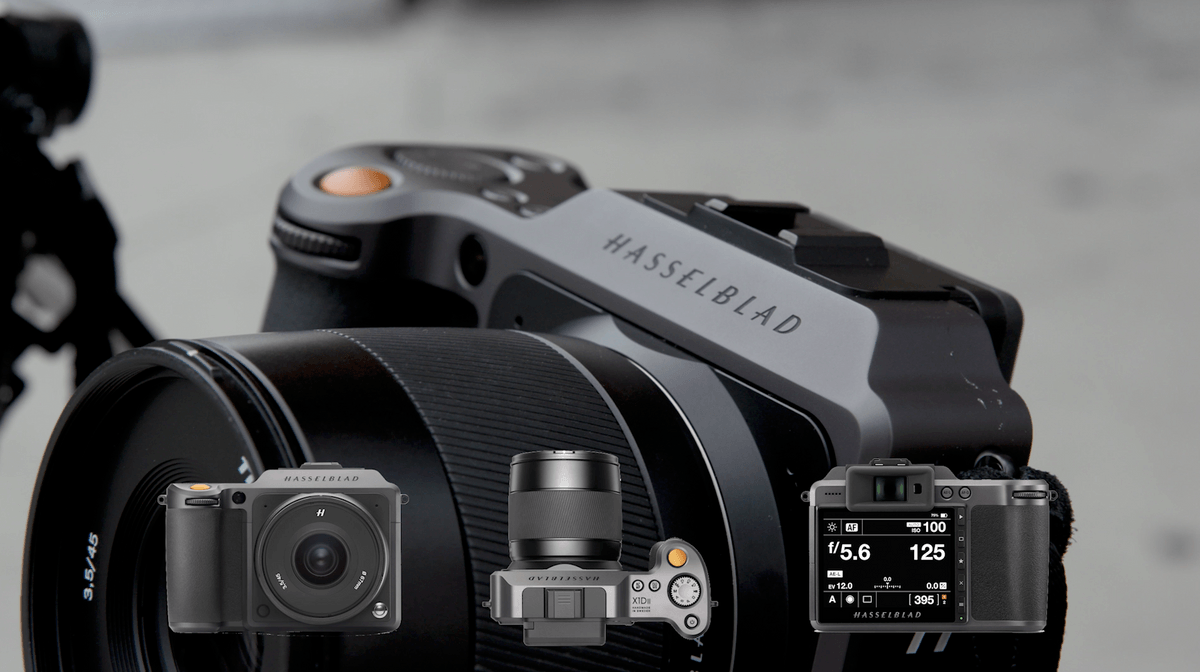 The Hasselblad is a sleek wonderful look. It’s a great design and small in your hand and compact. I find that the buttons, even though a lot of them are on the screen, are very intuitive to get to. There are a lot of internal menus to access on the screen. There are not a lot of buttons.
The Hasselblad is a sleek wonderful look. It’s a great design and small in your hand and compact. I find that the buttons, even though a lot of them are on the screen, are very intuitive to get to. There are a lot of internal menus to access on the screen. There are not a lot of buttons.
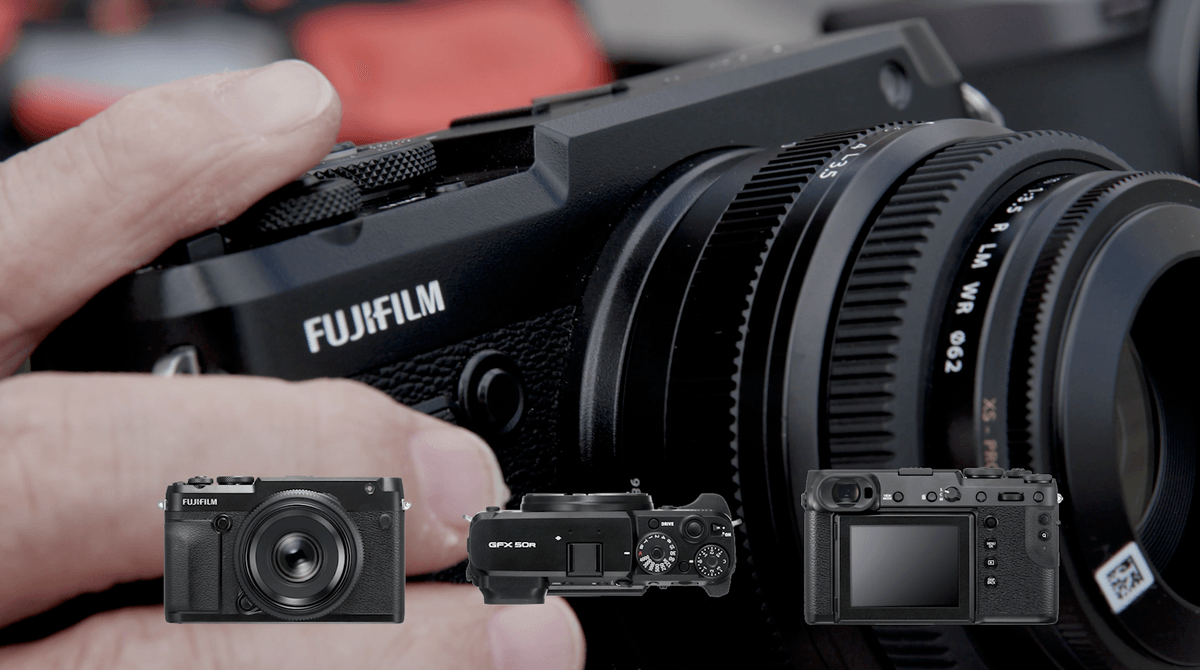 The Fujifilm has definitely gone with their classic design for Fujis with the aperture on the lens and lots of dials. There are a lot of programable buttons on this body which is kind of nice.
The Fujifilm has definitely gone with their classic design for Fujis with the aperture on the lens and lots of dials. There are a lot of programable buttons on this body which is kind of nice.
These two cameras have the same sensor made by Sony. But it is really about how each of these companies interpolate the information to give you the images, the color science. We want to look at that with these two and see how they compare with each other. With the same sensor do they look the same? Do they look different? We’ll see.
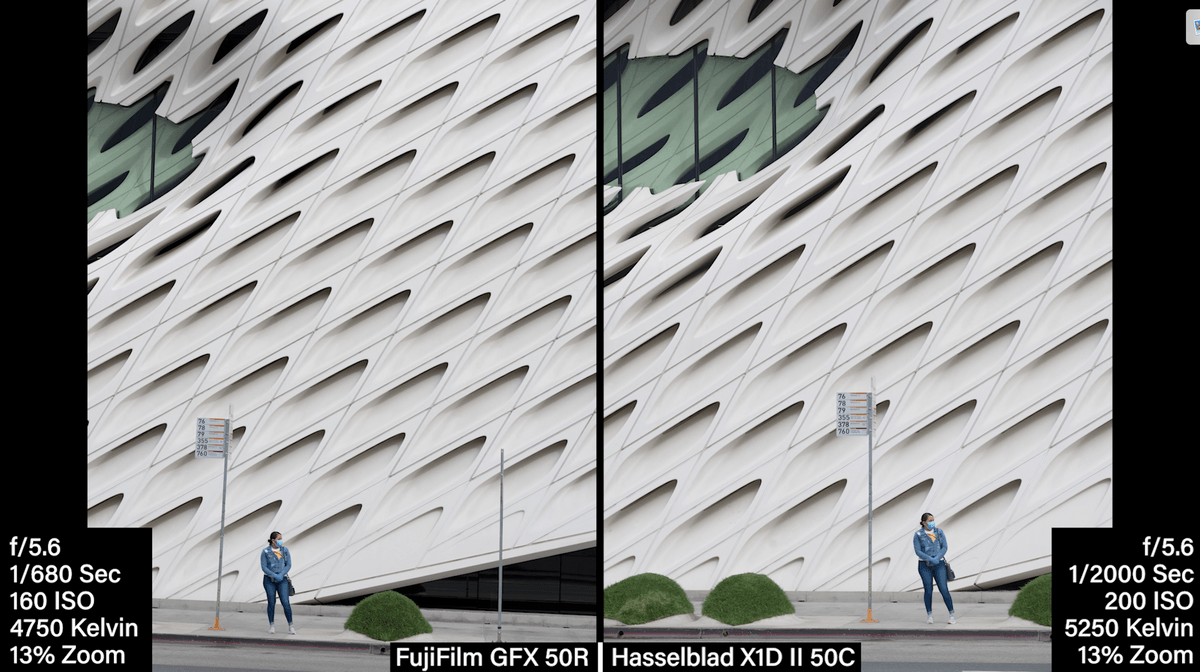 We have been out shooting the Hasselblad and the Fujifilm. These are two great medium format cameras with the same sensor size. Here is our first image with the Broad. We put them each at the color balance that they are going to be happy with. Out of the box the Fujifilm is much warmer and it is a little bit darker too.
We have been out shooting the Hasselblad and the Fujifilm. These are two great medium format cameras with the same sensor size. Here is our first image with the Broad. We put them each at the color balance that they are going to be happy with. Out of the box the Fujifilm is much warmer and it is a little bit darker too. 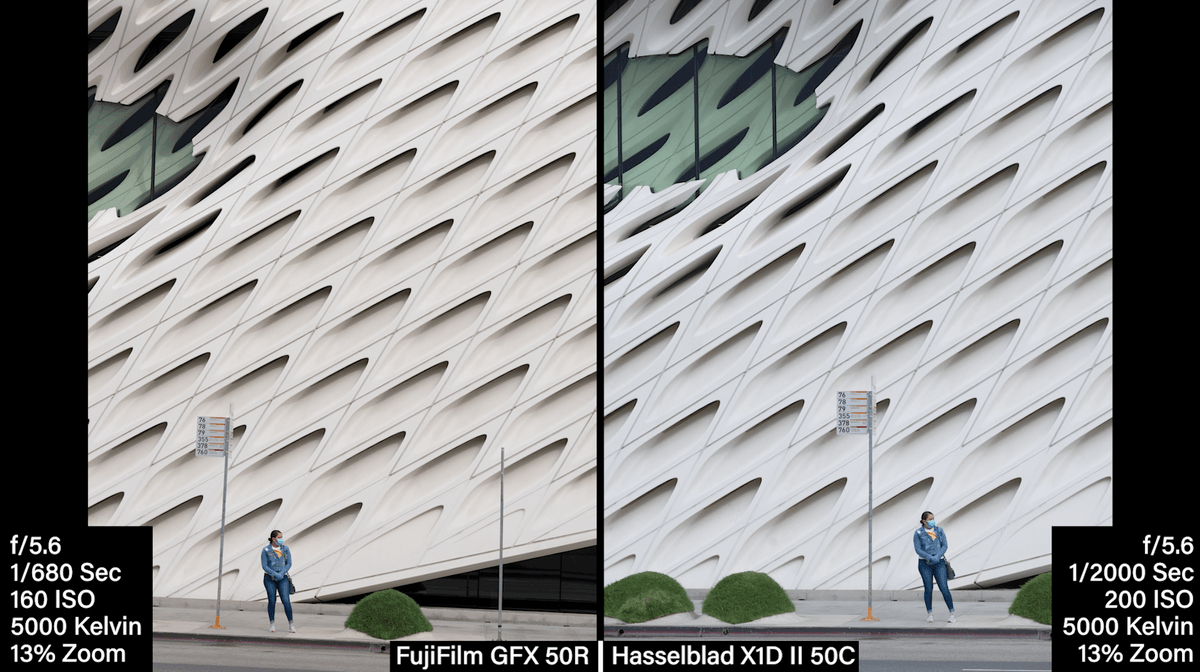 It is not quite as sensitive. We matched these images and made them look nice. Let’s take a look. If you get them back to the same color balance the Fujifilm is quite warm compared to the Hasselblad and a very different look.
It is not quite as sensitive. We matched these images and made them look nice. Let’s take a look. If you get them back to the same color balance the Fujifilm is quite warm compared to the Hasselblad and a very different look.
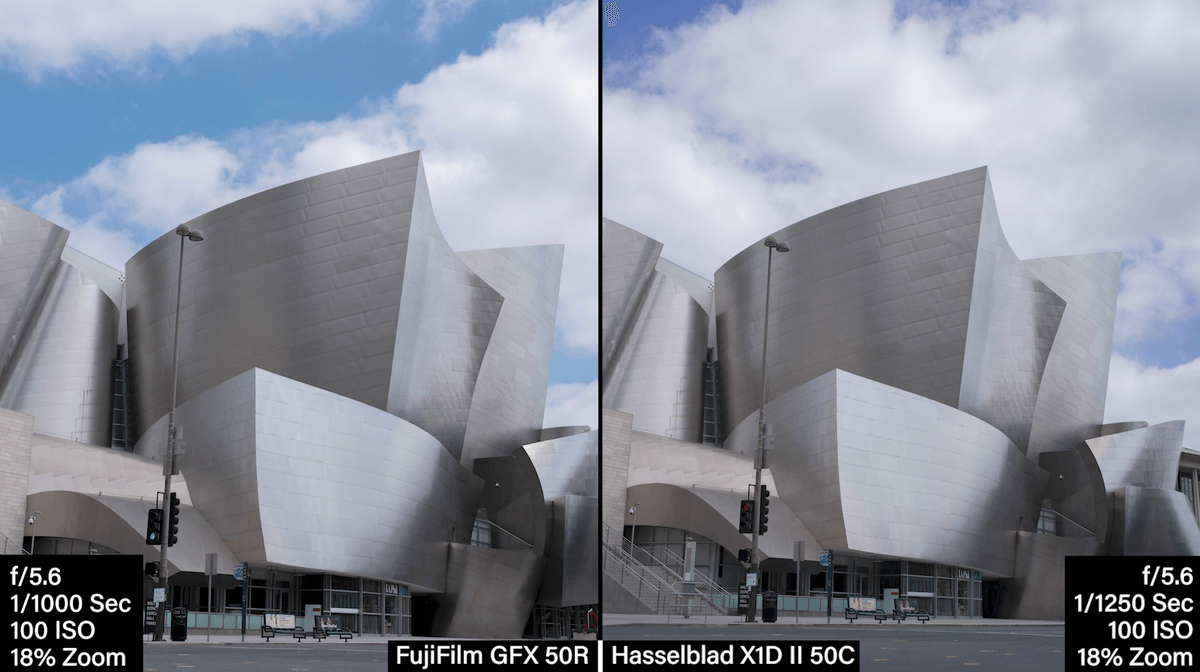 Here are the final images of the Disney Concert Hall. There was a beautiful sky with the clouds. They look very similar. We could stand to add a little more contrast to the Hasselblad. The Hasselblad is a little more on the warm (magenta) side. The Fujifilm is more blue (cyan). I love both of the colors. The detail in both of these images is pretty incredible.
Here are the final images of the Disney Concert Hall. There was a beautiful sky with the clouds. They look very similar. We could stand to add a little more contrast to the Hasselblad. The Hasselblad is a little more on the warm (magenta) side. The Fujifilm is more blue (cyan). I love both of the colors. The detail in both of these images is pretty incredible. 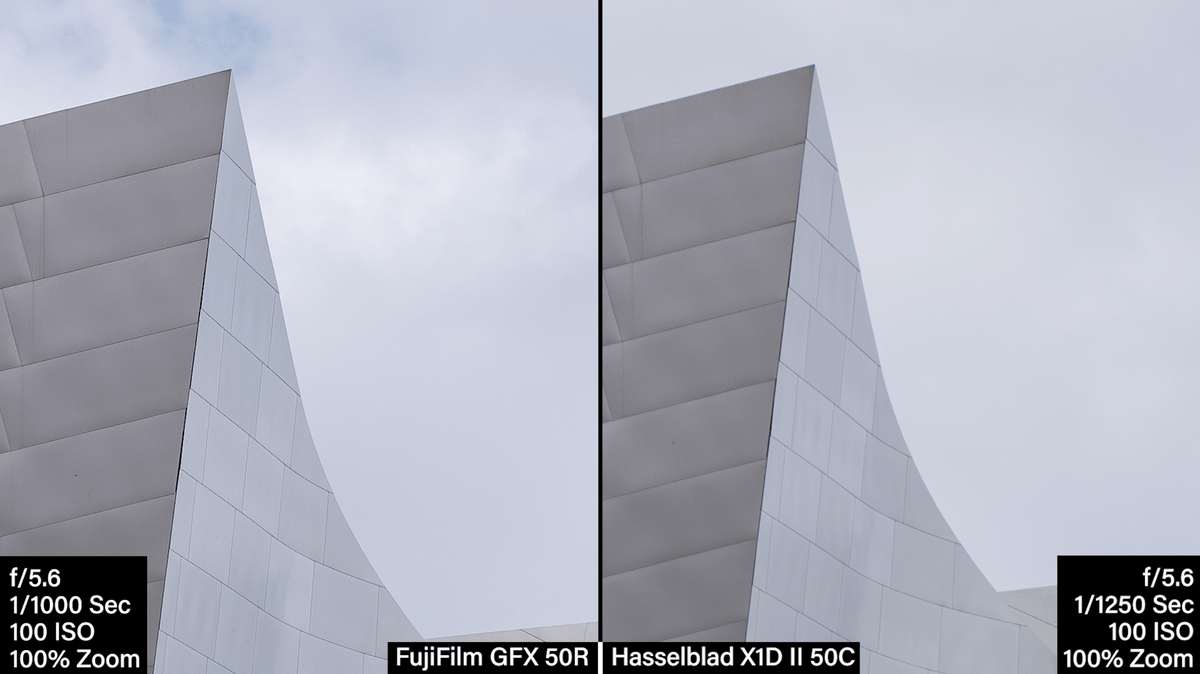 When you look at the point and the look of the metal when it is blown way up it is pretty amazing. There is an incredible amount of detail in both of these images. I love the tonality in all of these reflective curves. So there are a lot of different colors in the metal and shades of bright and dark which you even see more in the details here.
When you look at the point and the look of the metal when it is blown way up it is pretty amazing. There is an incredible amount of detail in both of these images. I love the tonality in all of these reflective curves. So there are a lot of different colors in the metal and shades of bright and dark which you even see more in the details here. 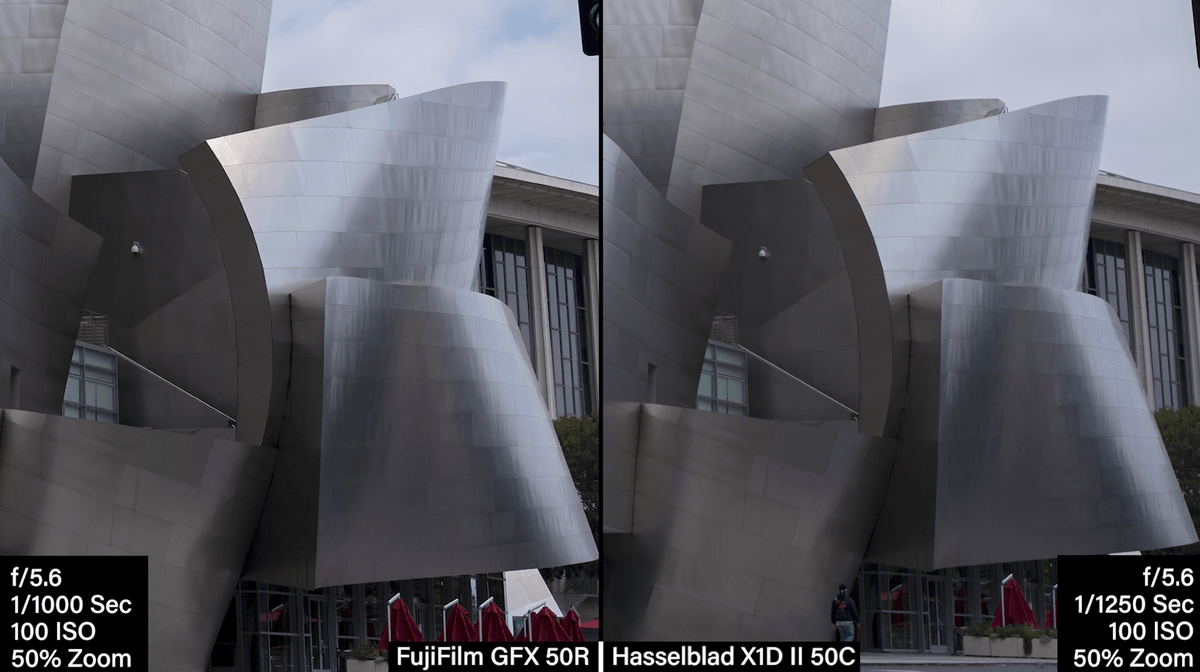 You see the blues the curve of the metal. They both hold this extremely well. You see great color gradation. I like them both for different reasons. I think the Hasselblad feels a little more true to life color rendition. And the Fujifilm has this real nice warm to cool color tonality. Look at this last image here.
You see the blues the curve of the metal. They both hold this extremely well. You see great color gradation. I like them both for different reasons. I think the Hasselblad feels a little more true to life color rendition. And the Fujifilm has this real nice warm to cool color tonality. Look at this last image here. 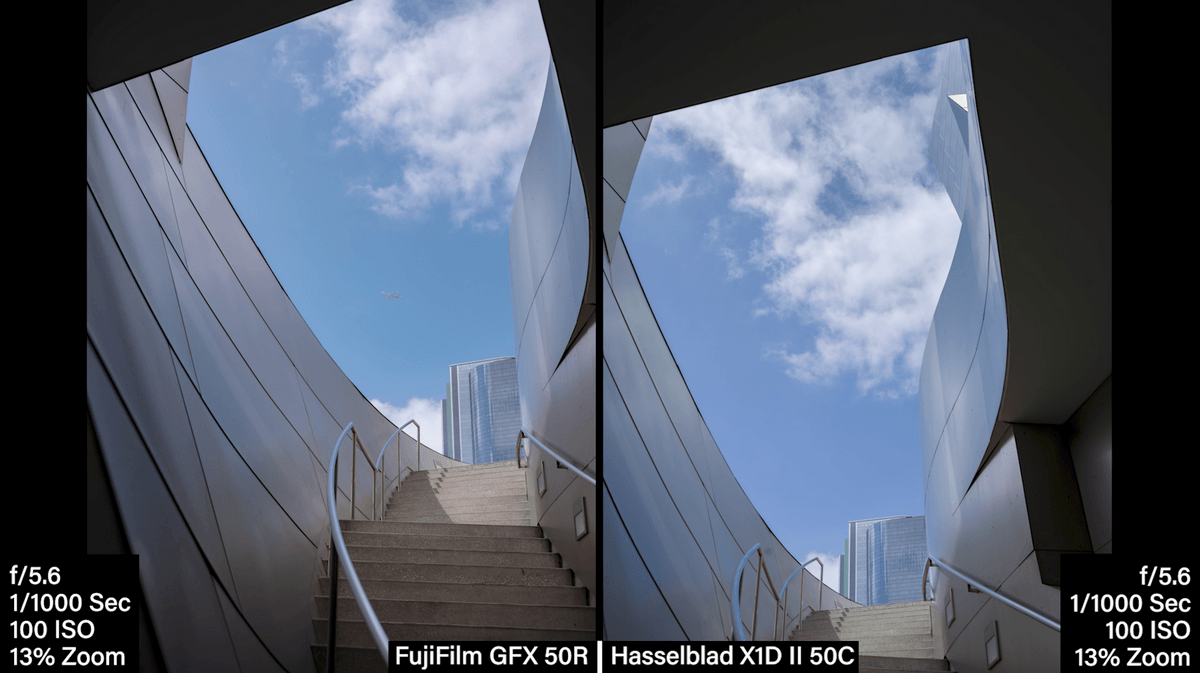 There is just something I love about the color rendition with the Hasselblad. The color science is amazing to me.
There is just something I love about the color rendition with the Hasselblad. The color science is amazing to me.
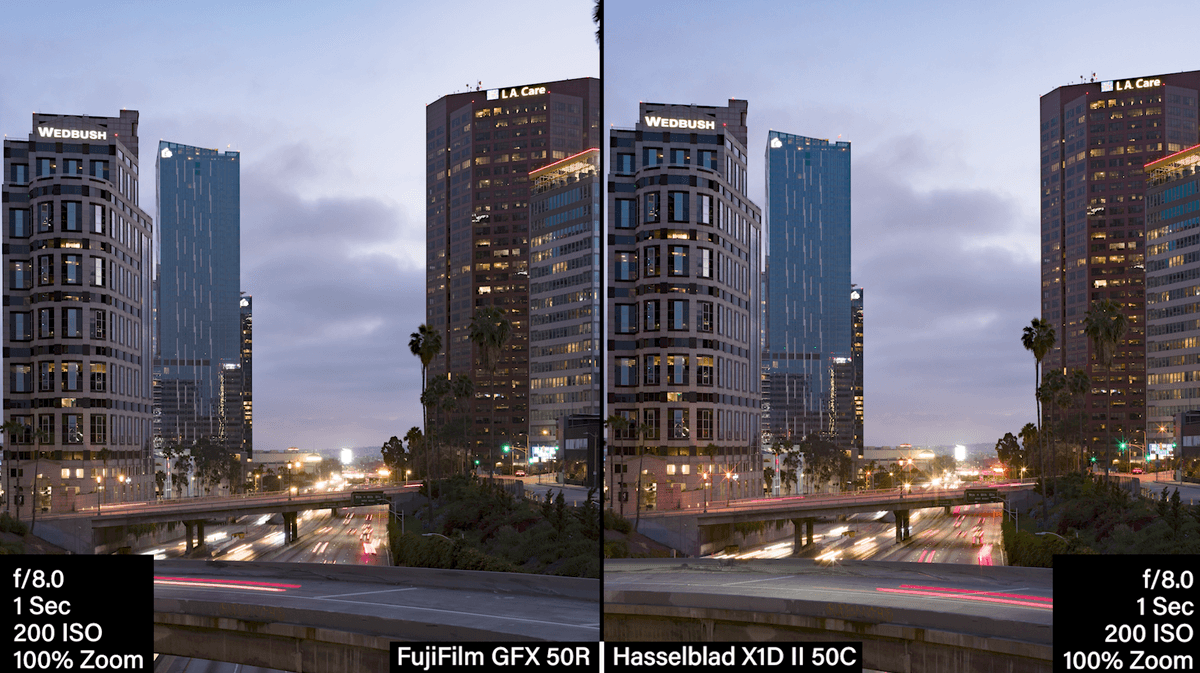 We shot this next scene as a downtown cityscape. This one we worked really hard to be able to get these two to match each other. We really wanted the color to match as well as possible to mitigate any out of camera issues. In this low light situation, as hard as we tried, the color is so much richer in the Hasselblad image.
We shot this next scene as a downtown cityscape. This one we worked really hard to be able to get these two to match each other. We really wanted the color to match as well as possible to mitigate any out of camera issues. In this low light situation, as hard as we tried, the color is so much richer in the Hasselblad image. 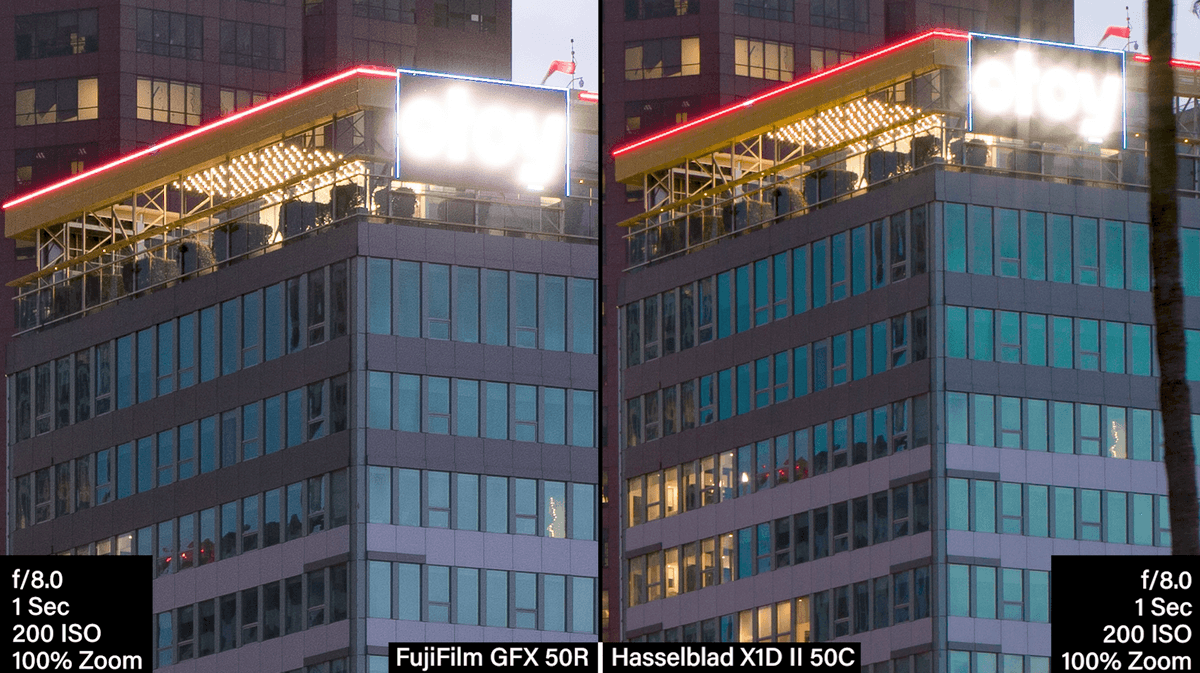 When you look at the red neon strip it is real punchy, rich red. Even the green is very beautiful. There is a depth and intensity to the color that is really pretty. The Fujifilm is beautiful, there is no doubt about it. In this image in particular I like the color of the Hasselblad better.
When you look at the red neon strip it is real punchy, rich red. Even the green is very beautiful. There is a depth and intensity to the color that is really pretty. The Fujifilm is beautiful, there is no doubt about it. In this image in particular I like the color of the Hasselblad better.
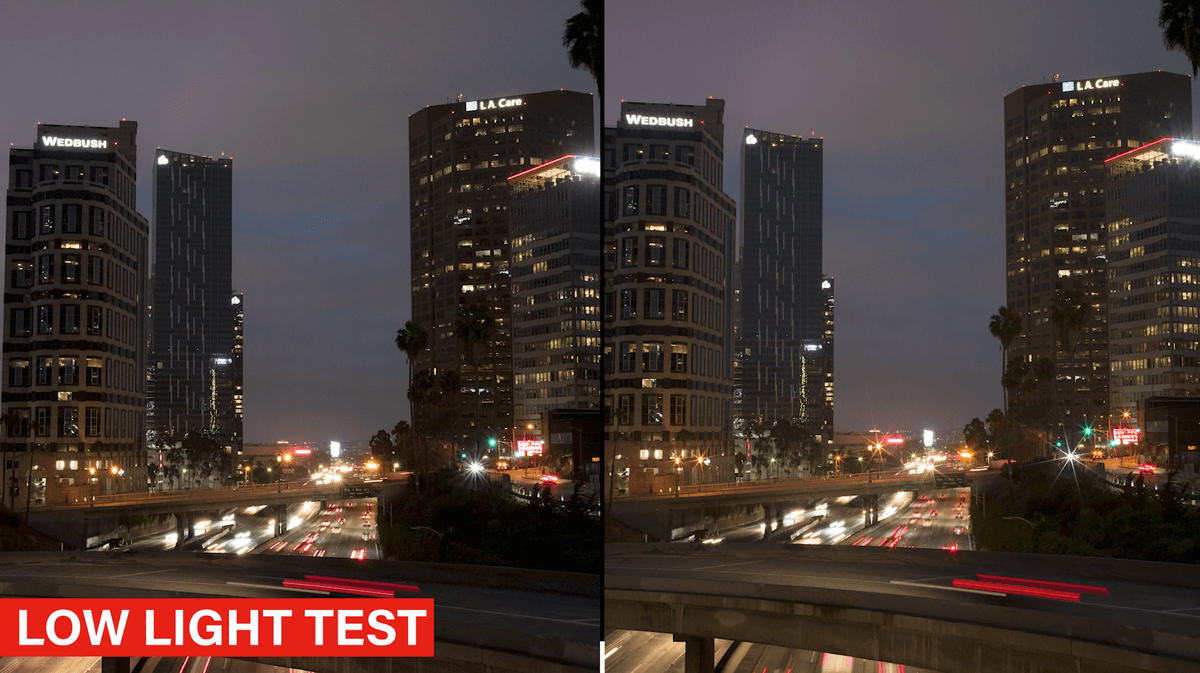 We shot some low light images here as well. We shot these at 3200 ISO. If you look at that same neon it is interesting to see. Even when you push up the ISO the color holds on really well with the Hasselblad.
We shot some low light images here as well. We shot these at 3200 ISO. If you look at that same neon it is interesting to see. Even when you push up the ISO the color holds on really well with the Hasselblad. 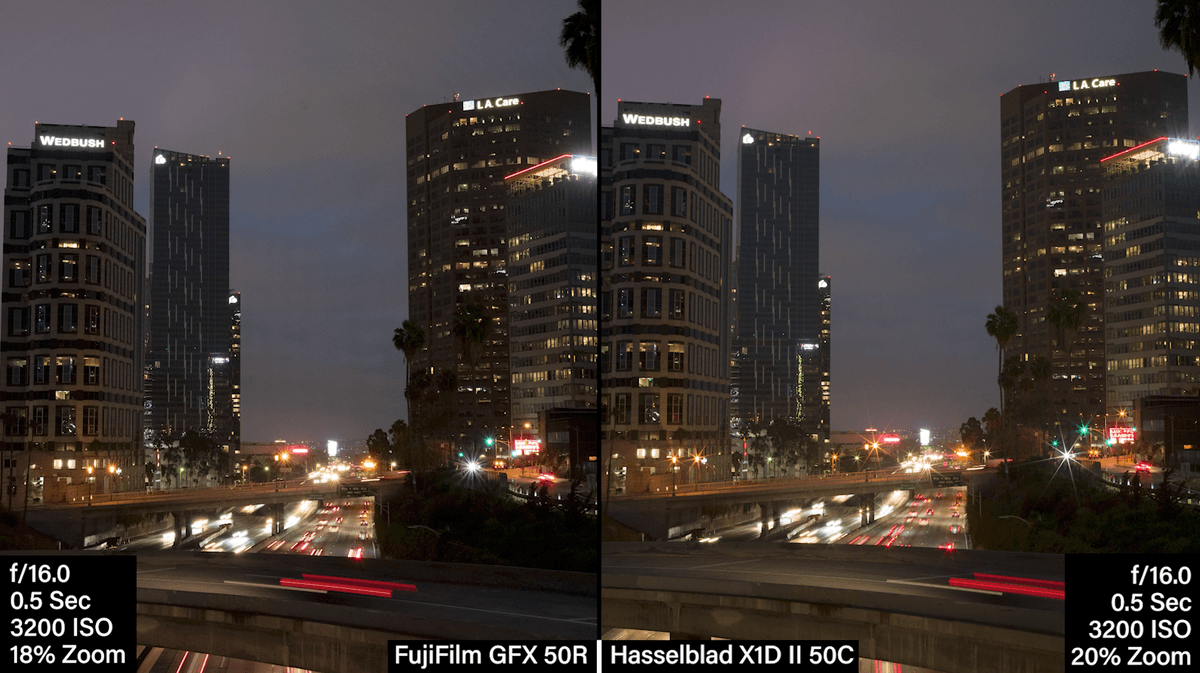 I feel like you are even getting a little bit more out of the red with the Fujifilm with this image than the previous image shot earlier in the day. Probably because it is more underexposed. They are both handling that higher ISO very similar. It seems like there is a little softer grain in the Hasselblad.
I feel like you are even getting a little bit more out of the red with the Fujifilm with this image than the previous image shot earlier in the day. Probably because it is more underexposed. They are both handling that higher ISO very similar. It seems like there is a little softer grain in the Hasselblad.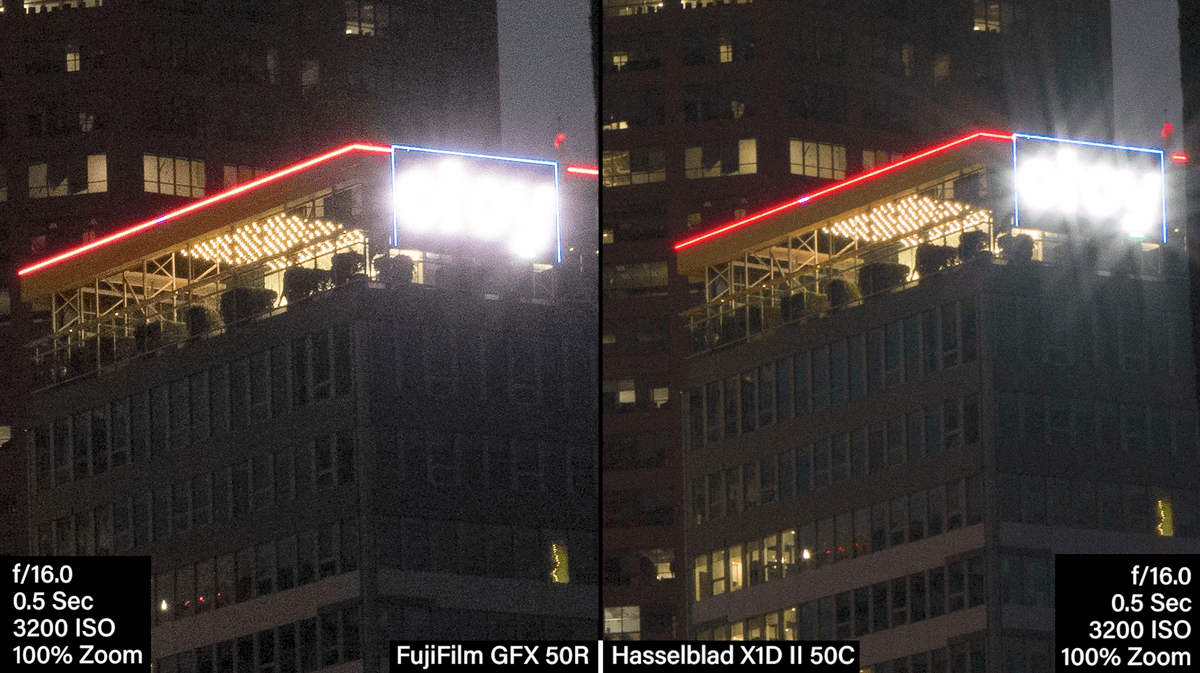
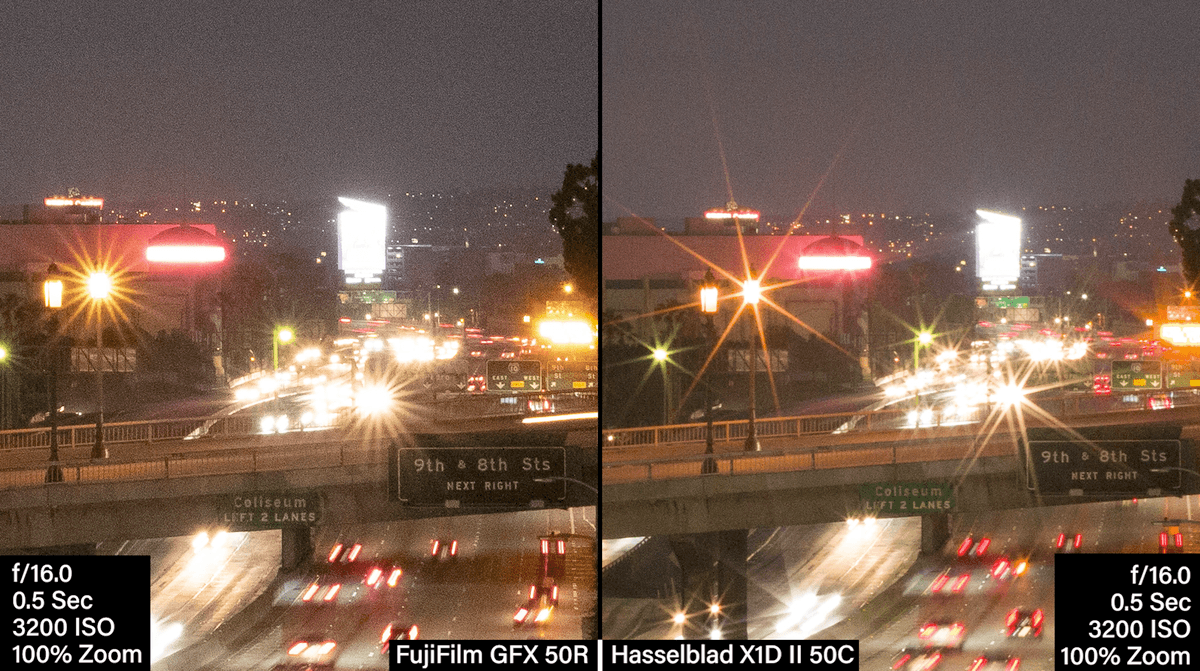
We did a strobe sync test. This is pretty important because this is a major difference between these two cameras. You cannot strobe sync with the Fujifilm above 1/125th of a second. 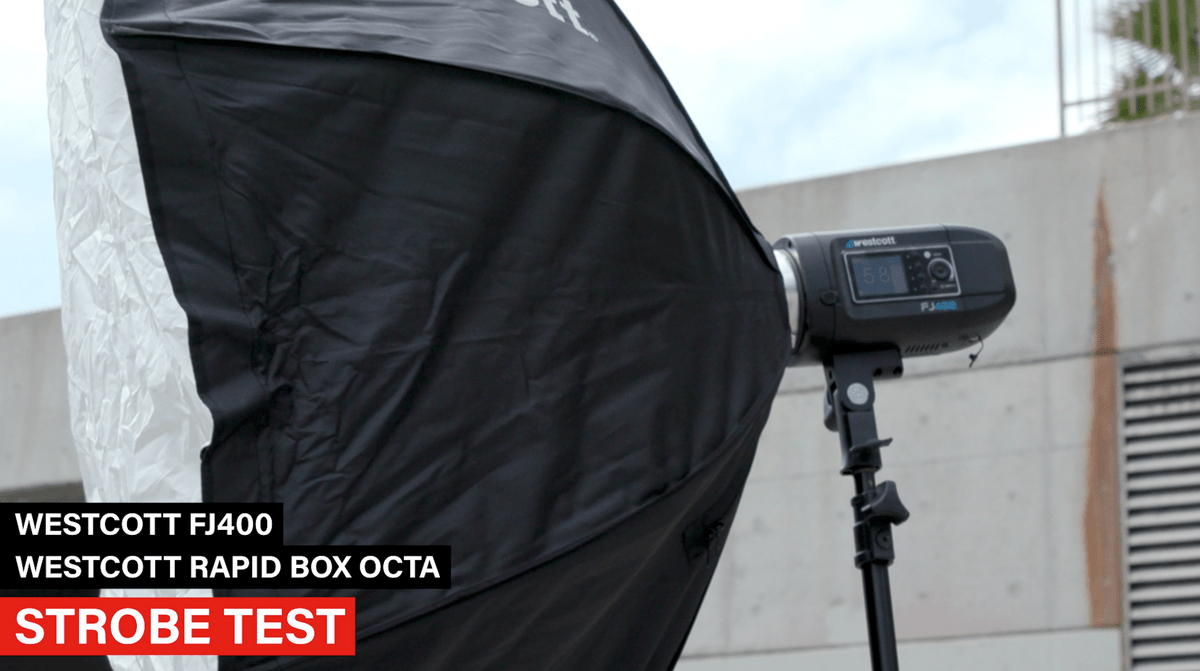 Whereas the Hasselblad has a leaf shutter and you can sync all the way up to 1/2000th of a second.
Whereas the Hasselblad has a leaf shutter and you can sync all the way up to 1/2000th of a second. 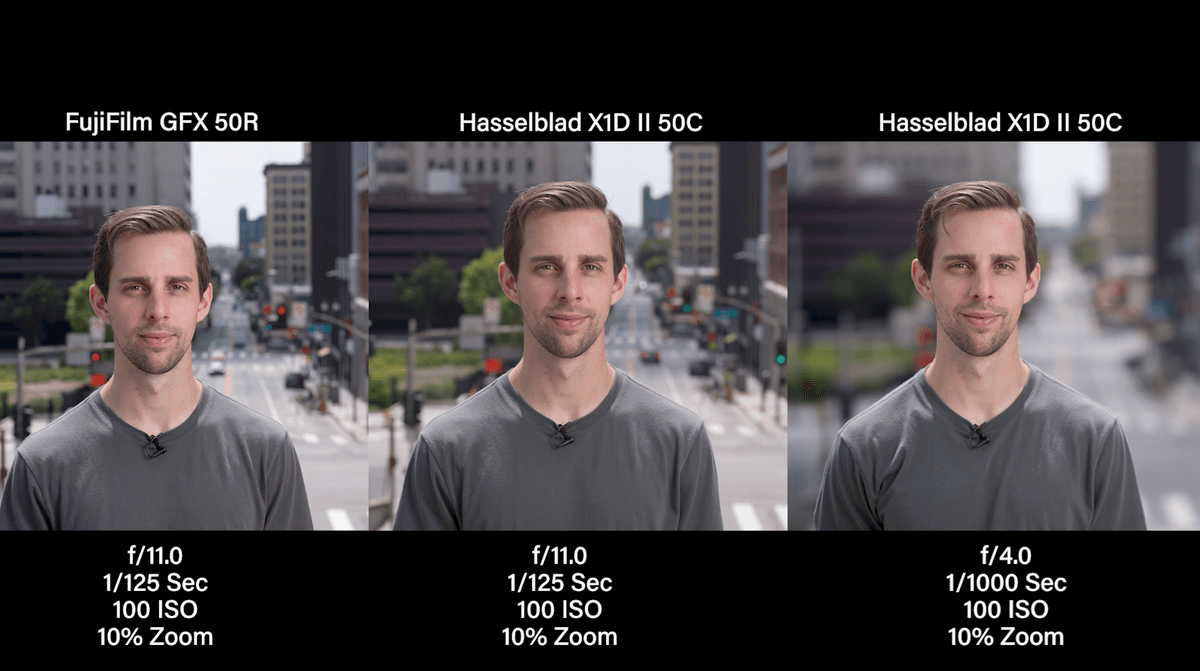 With these images you can see you have very shallow depth of field with the Hasselblad because you can go to 1/2000th of a second. You can open up the aperture and crush the background. It is so nice. With the Fujifilm you would have to use high speed sync which is a solution and I like to do that. But it is so much easier when you can do it with the camera. That is a major advantage with the Hasselblad. When you are shooting out doing fashion types of things and people you have complete control with strobes and the ambient light. If I shot with strobes I would definitely pick the Hasselblad for that reason alone. 1/125th of a second is just too slow.
With these images you can see you have very shallow depth of field with the Hasselblad because you can go to 1/2000th of a second. You can open up the aperture and crush the background. It is so nice. With the Fujifilm you would have to use high speed sync which is a solution and I like to do that. But it is so much easier when you can do it with the camera. That is a major advantage with the Hasselblad. When you are shooting out doing fashion types of things and people you have complete control with strobes and the ambient light. If I shot with strobes I would definitely pick the Hasselblad for that reason alone. 1/125th of a second is just too slow.
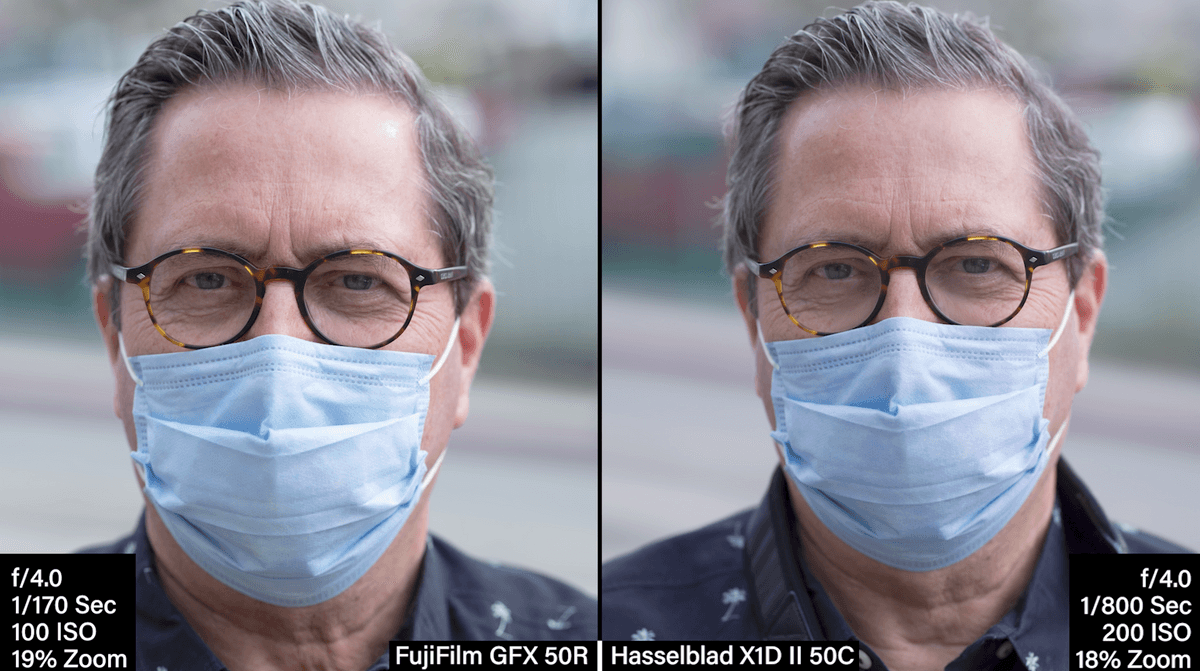 Here is a portrait of Jay P with each of the cameras. They are both pretty close. I was able to correct the color and get them very close.
Here is a portrait of Jay P with each of the cameras. They are both pretty close. I was able to correct the color and get them very close. 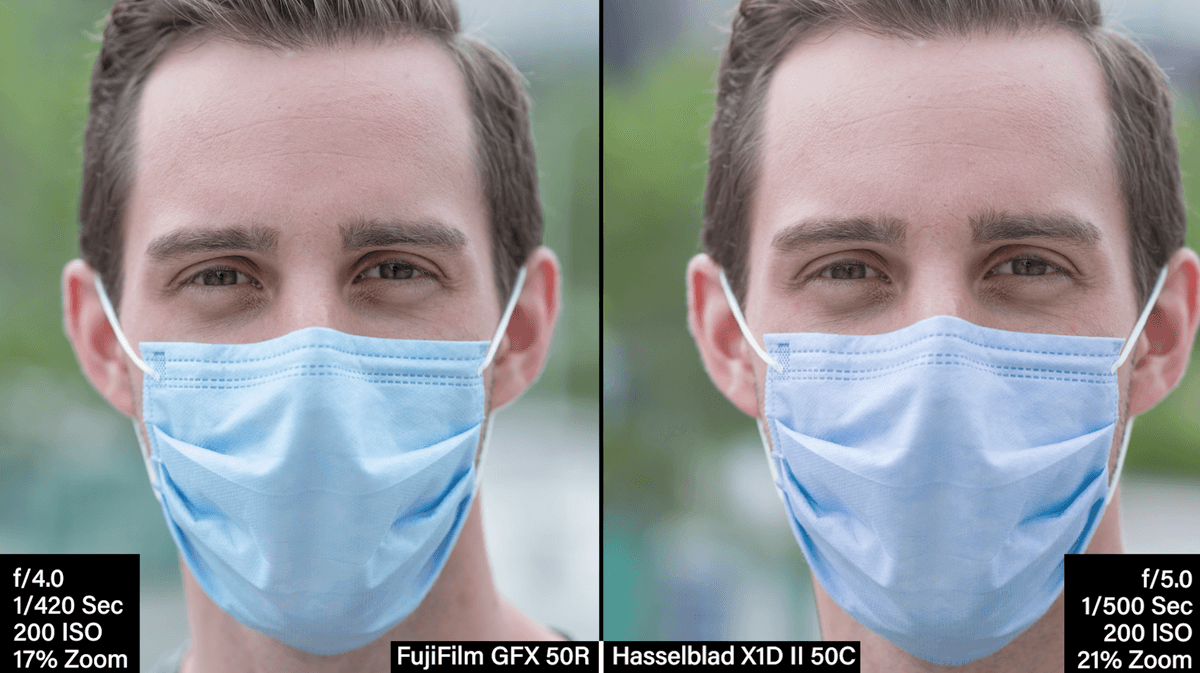 And the images of Kenneth look almost identical. When you mess with the color on these you can get them to look very close to each other.
And the images of Kenneth look almost identical. When you mess with the color on these you can get them to look very close to each other.
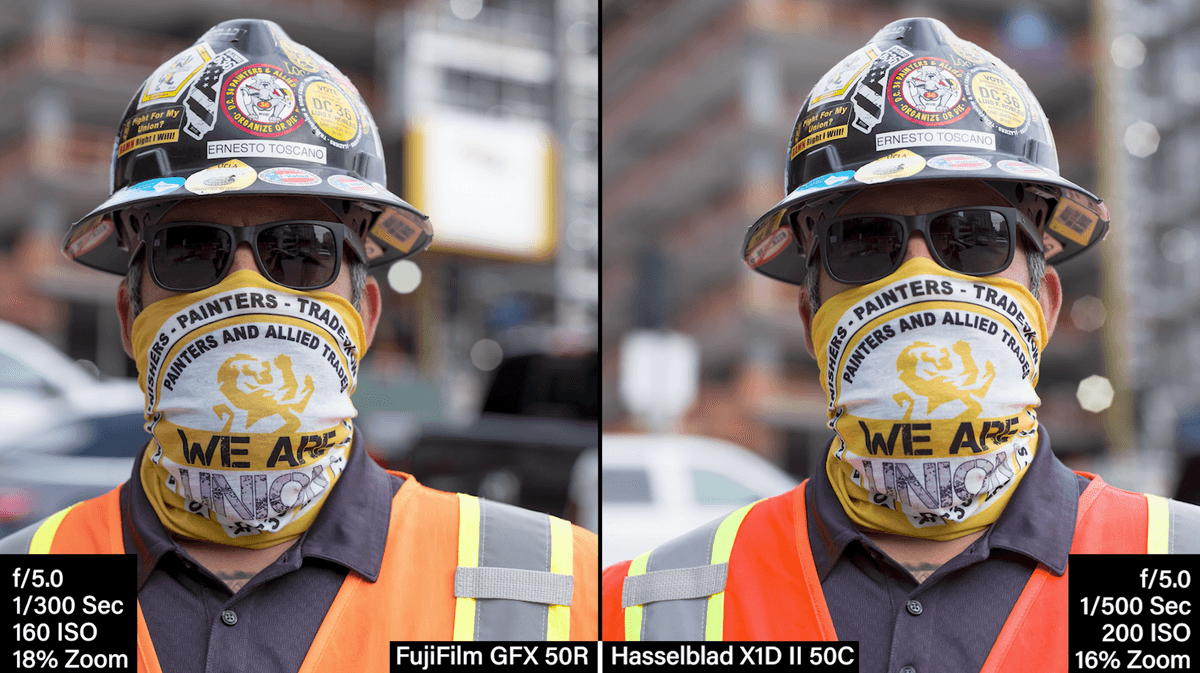 Looking at this street portrait of this man here, the Hasselblad has a very strong orange color. You can see up in the red of the sticker on the helmet.
Looking at this street portrait of this man here, the Hasselblad has a very strong orange color. You can see up in the red of the sticker on the helmet.
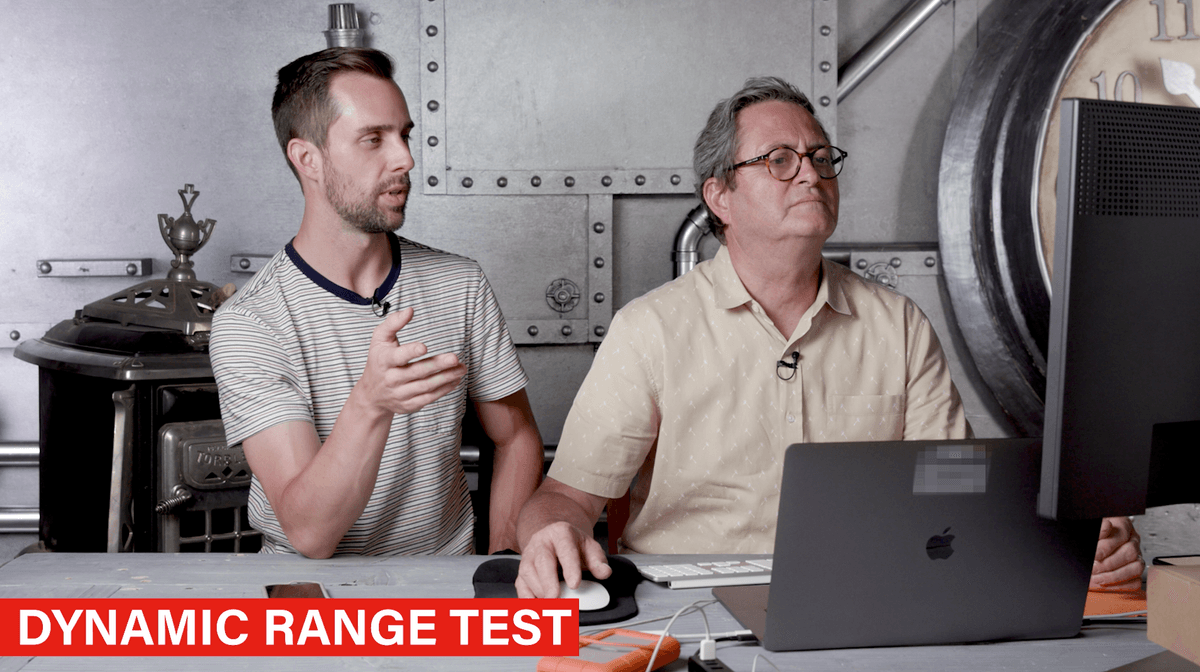 The way we set this up is Kenneth sat at the table and we metered for exposure inside and then we metered for exposure outside the window. And then we also shot an exposure between those.
The way we set this up is Kenneth sat at the table and we metered for exposure inside and then we metered for exposure outside the window. And then we also shot an exposure between those.
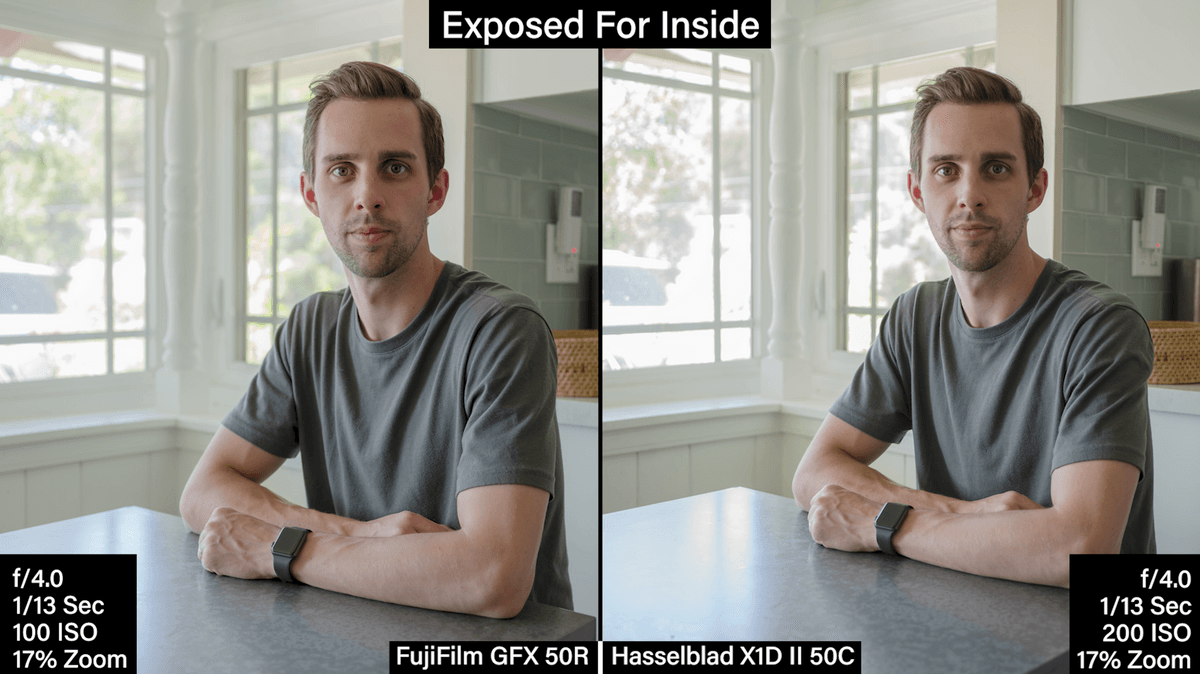 This photo was for the inside and exposed at f/4.0 at 1/30th of a second. Obviously the outside is super blown out. The Hasselblad looks a little more blown out. There is less information in the trees. That makes sense because the Fujifilm is a little darker out of the box. So that is about a half of a stop difference there.
This photo was for the inside and exposed at f/4.0 at 1/30th of a second. Obviously the outside is super blown out. The Hasselblad looks a little more blown out. There is less information in the trees. That makes sense because the Fujifilm is a little darker out of the box. So that is about a half of a stop difference there.
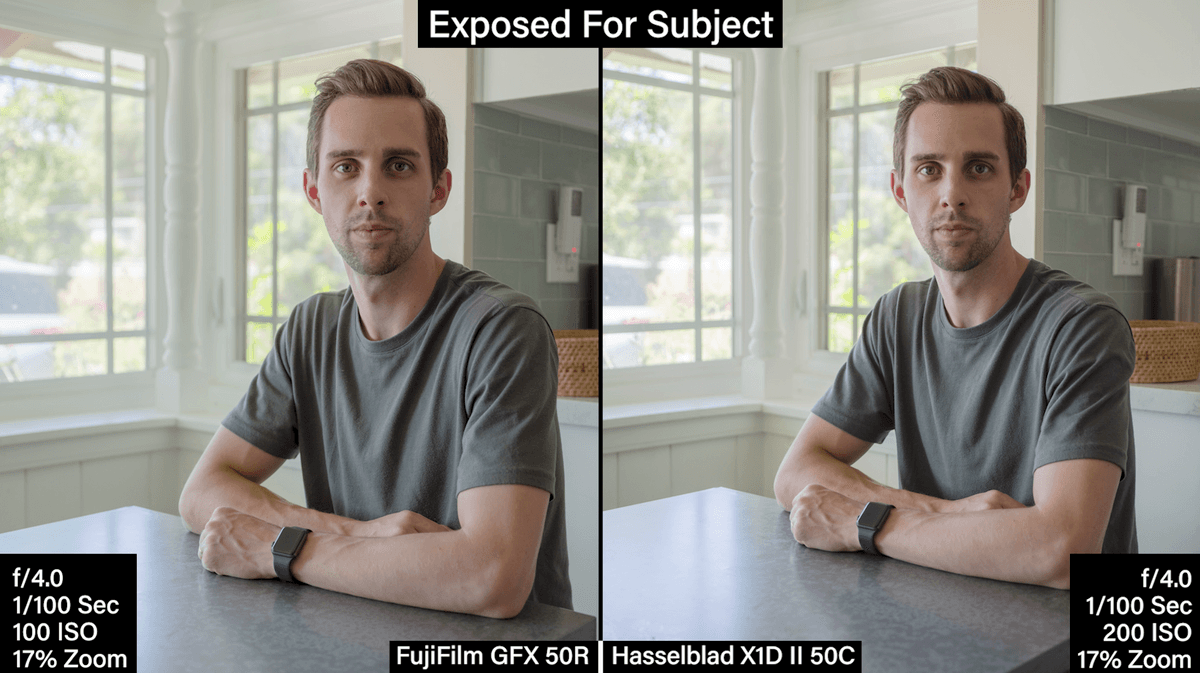 Here is the middle exposure. With this one Kenneth was a little underexposed and the outside was a little overexposed and then we brought them back together. The Hasselblad is clipping where the car is. The car is hot compared to the Fujifilm. It’s a little brighter. That half a stop makes a difference. You might want to underexpose the Hasselblad a little bit.
Here is the middle exposure. With this one Kenneth was a little underexposed and the outside was a little overexposed and then we brought them back together. The Hasselblad is clipping where the car is. The car is hot compared to the Fujifilm. It’s a little brighter. That half a stop makes a difference. You might want to underexpose the Hasselblad a little bit.
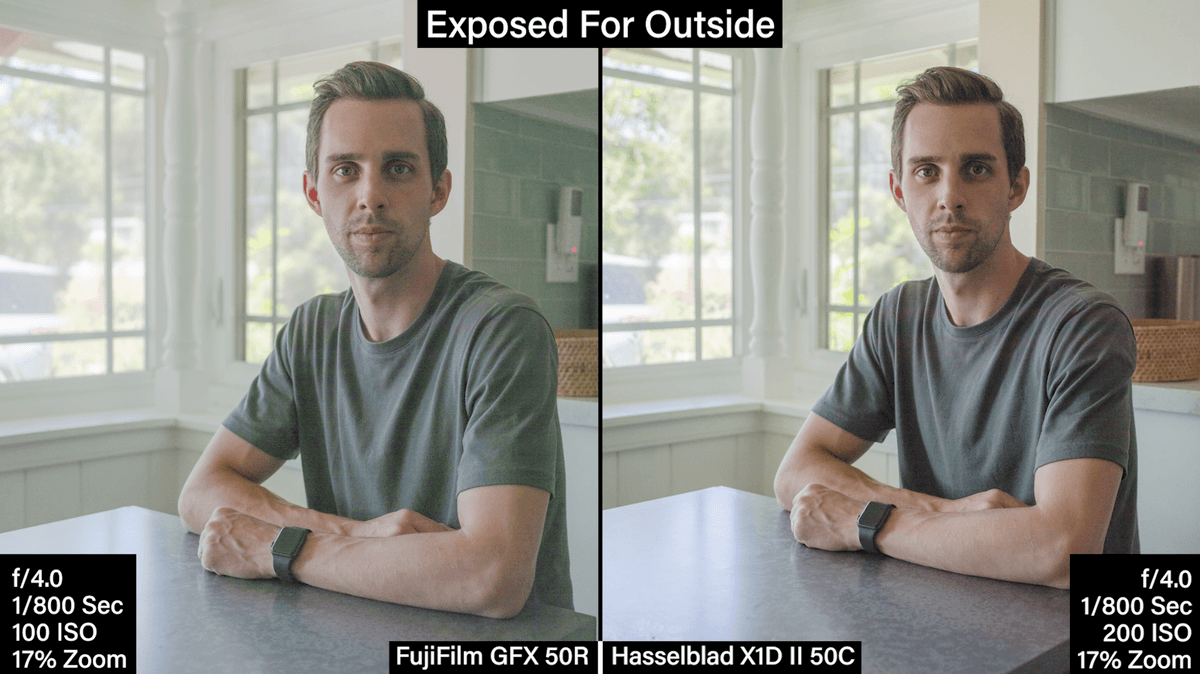 Here is the image that was exposed for the outside. The inside was very dark. Only the window outside was properly exposed and then we raised the shadows up to see what kind of information we could get. The Fujifilm is a little greener and the Hasselblad has these magenta blotches.
Here is the image that was exposed for the outside. The inside was very dark. Only the window outside was properly exposed and then we raised the shadows up to see what kind of information we could get. The Fujifilm is a little greener and the Hasselblad has these magenta blotches. 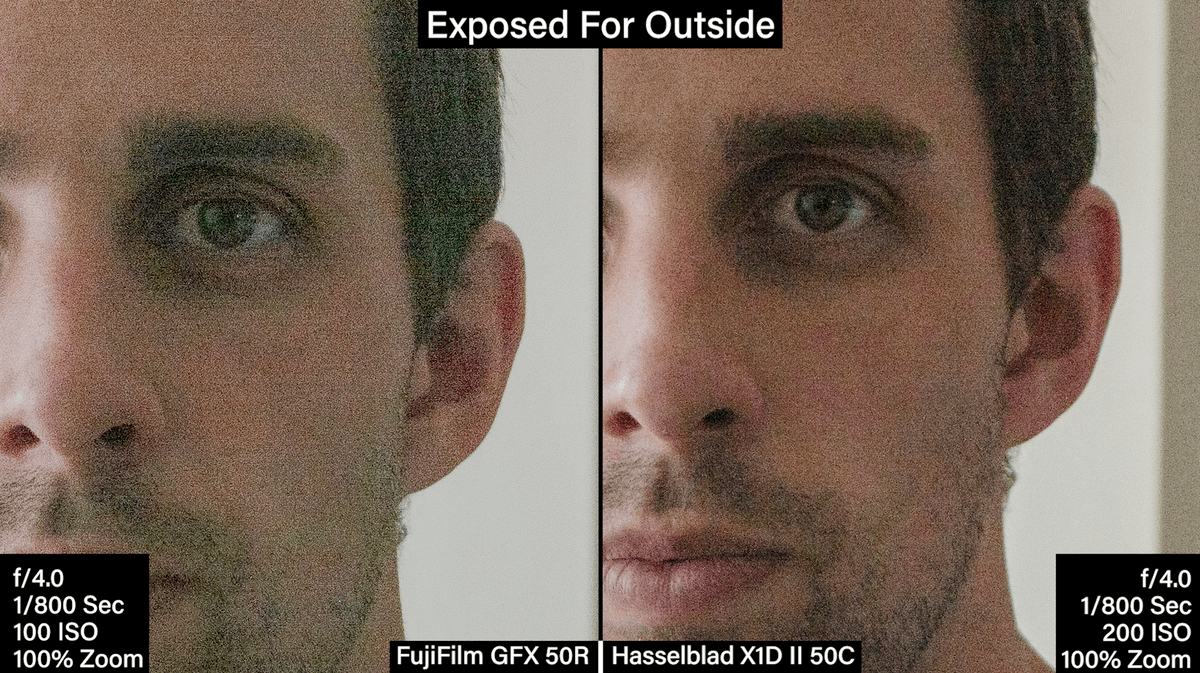 The Fujifilm also has this over sharpening grain look. Both cameras have handled it really well though. We pushed these 7 stops. Kenneth’s shadow side was underexposed by 7 stops.
The Fujifilm also has this over sharpening grain look. Both cameras have handled it really well though. We pushed these 7 stops. Kenneth’s shadow side was underexposed by 7 stops. 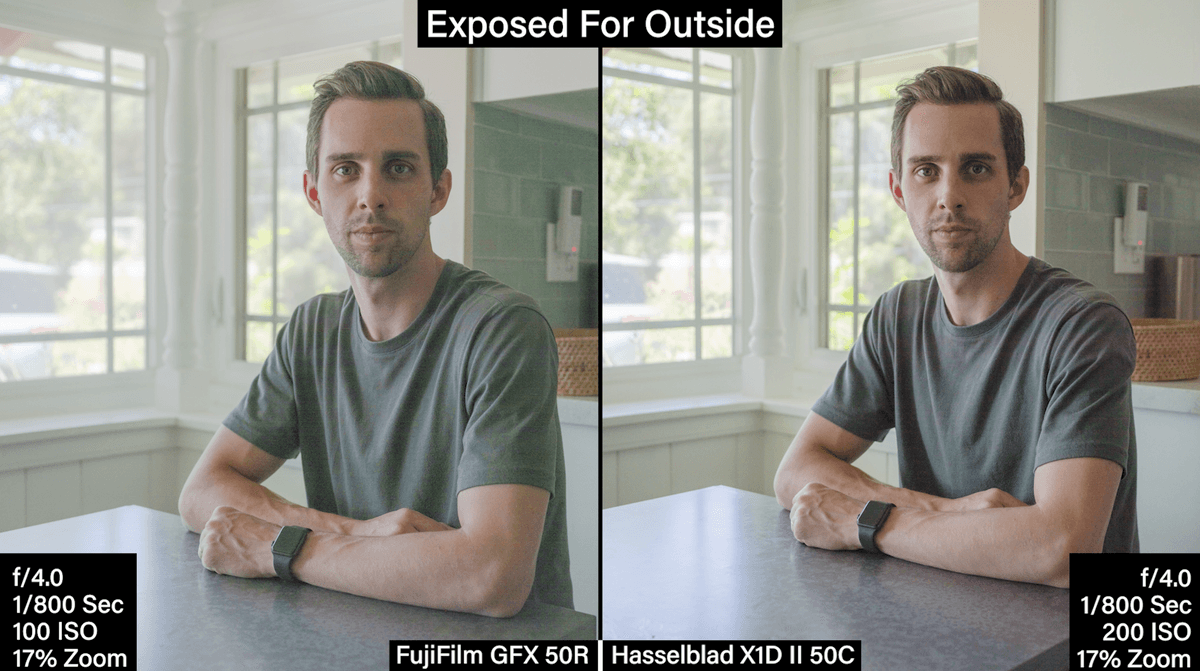 It is pretty incredible how much information both of these cameras are holding. I would say it is a toss-up in terms of dynamic range here. Maybe a slight edge to the Fujifilm because it held the highlights better.
It is pretty incredible how much information both of these cameras are holding. I would say it is a toss-up in terms of dynamic range here. Maybe a slight edge to the Fujifilm because it held the highlights better.
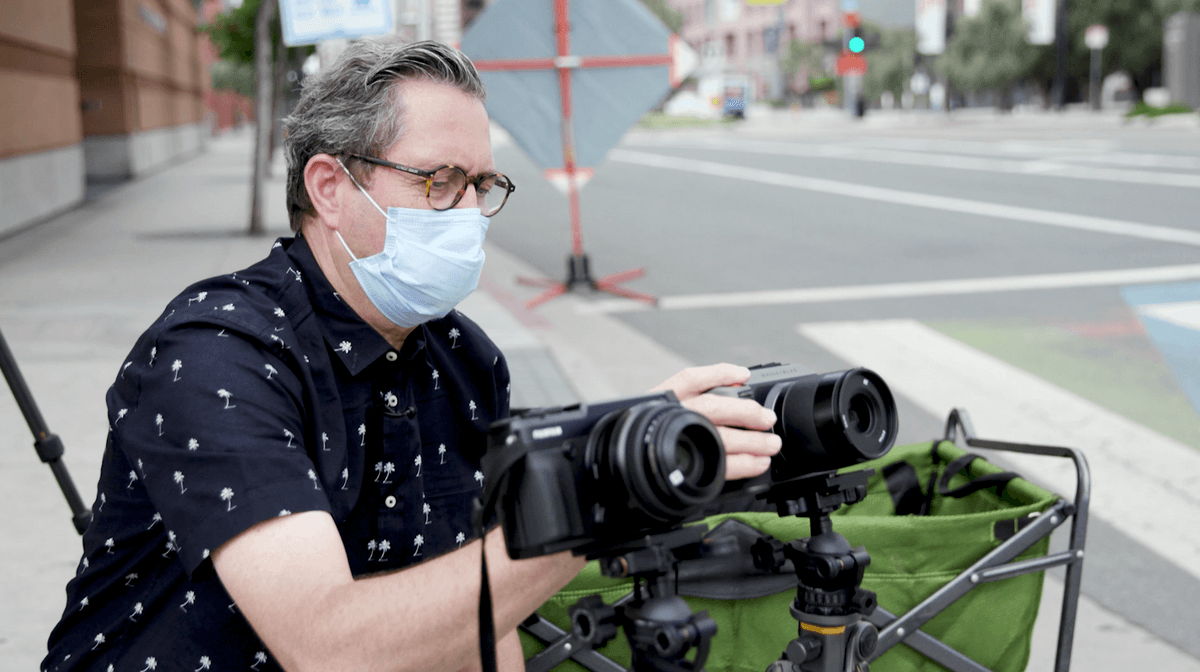 Let’s talk about these two cameras, the experience of shooting with them. There are several things that are going through my mind. My first thought is the Fujifilm, even though it is the more compact version of the GFX 50, it is still a beast of a camera.
Let’s talk about these two cameras, the experience of shooting with them. There are several things that are going through my mind. My first thought is the Fujifilm, even though it is the more compact version of the GFX 50, it is still a beast of a camera. 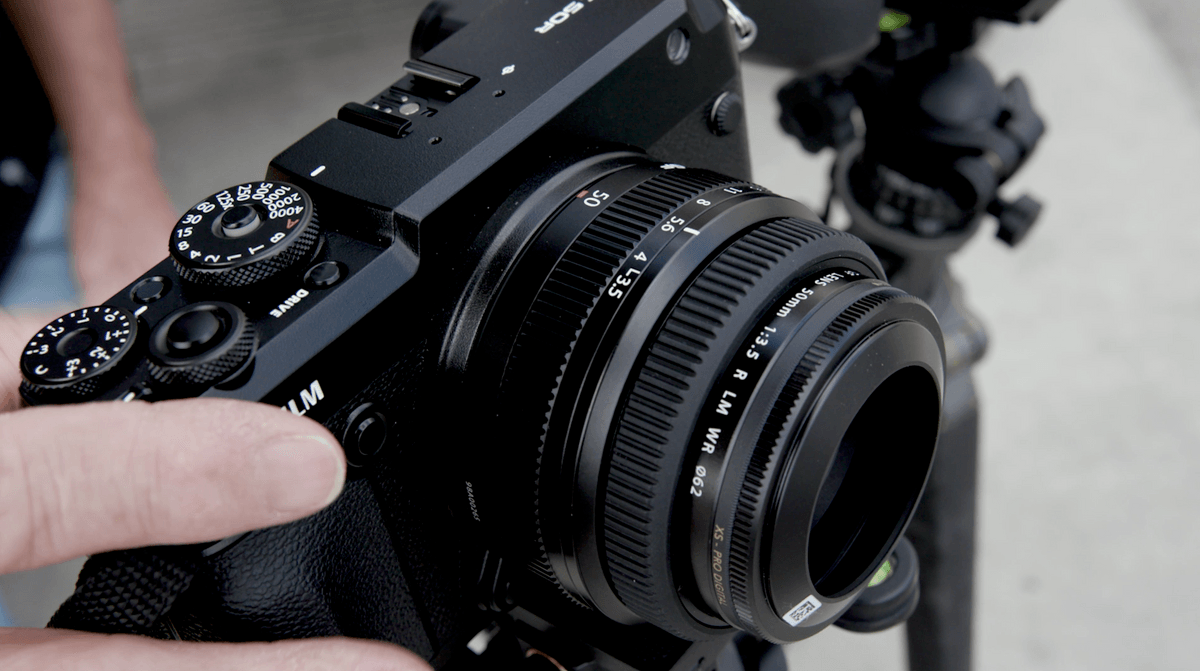 It is big. The lens is big. I like the ergonomics of Fujifilm typically. But this one felt a little clunky. The Hasselblad was small and compact. More like a mirrorless camera. If felt more like a run and go kind of platform. It was easy to get around with it. Ergonomically is just fit in your hand. It did not feel like a big clunky camera.
It is big. The lens is big. I like the ergonomics of Fujifilm typically. But this one felt a little clunky. The Hasselblad was small and compact. More like a mirrorless camera. If felt more like a run and go kind of platform. It was easy to get around with it. Ergonomically is just fit in your hand. It did not feel like a big clunky camera. 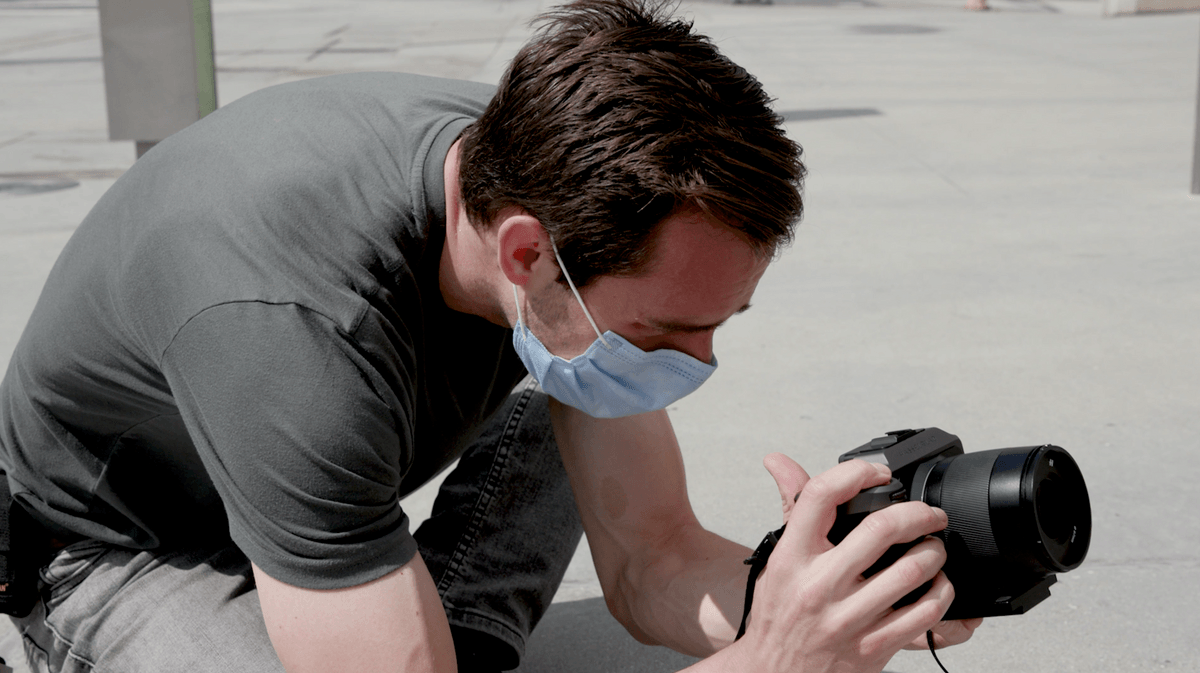 I did wish the Hasselblad had a couple more dials. It was almost too sleek in terms of usability. I did like the tactile nature of the Fujifilm a little more. Fujifilm always has that going for them. The Hasselblad is a lot of menu stuff. I didn’t find the menus hard to get through. They were very simple to use and to get where you needed to go.
I did wish the Hasselblad had a couple more dials. It was almost too sleek in terms of usability. I did like the tactile nature of the Fujifilm a little more. Fujifilm always has that going for them. The Hasselblad is a lot of menu stuff. I didn’t find the menus hard to get through. They were very simple to use and to get where you needed to go.
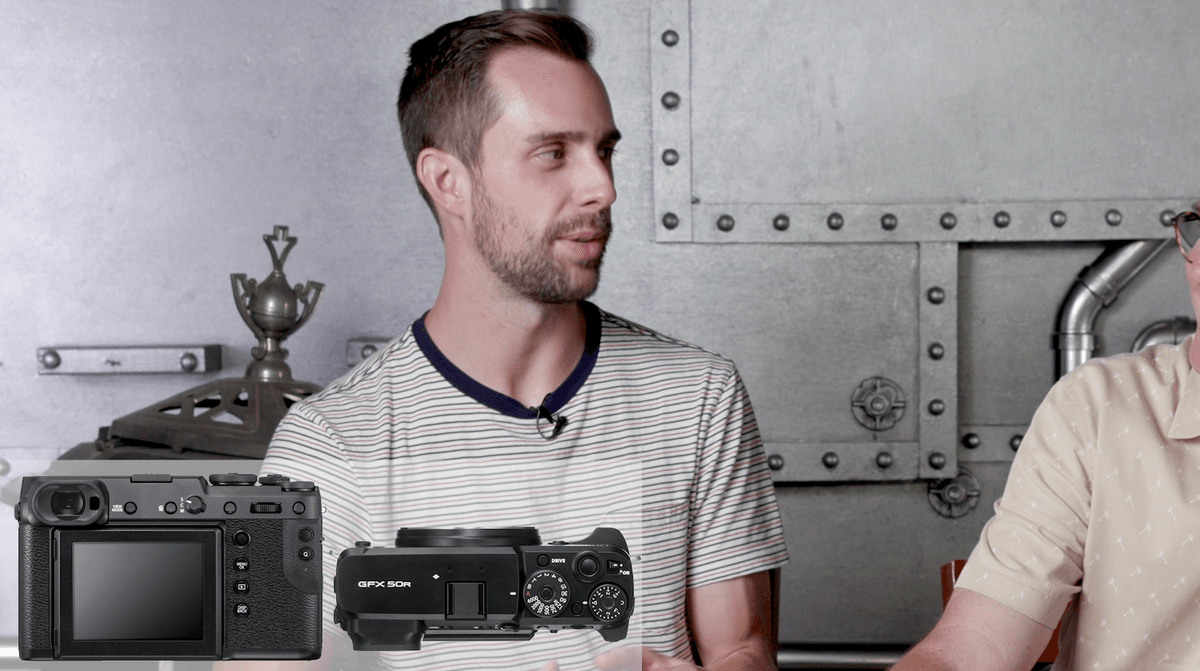 I think the autofocus on the Hasselblad is a little slow. The Fujifilm beats it out in that category. Definitely, the Fujifilm was about as fast as any other Fujifilm camera as far as the autofocus goes. The Hasselblad hunted a lot more. So you are really making a compromise there between color. The Hasselblad has extremely nice color. When we first shot it we were so impressed with the color. I have not seen color like that in a long time.
I think the autofocus on the Hasselblad is a little slow. The Fujifilm beats it out in that category. Definitely, the Fujifilm was about as fast as any other Fujifilm camera as far as the autofocus goes. The Hasselblad hunted a lot more. So you are really making a compromise there between color. The Hasselblad has extremely nice color. When we first shot it we were so impressed with the color. I have not seen color like that in a long time. 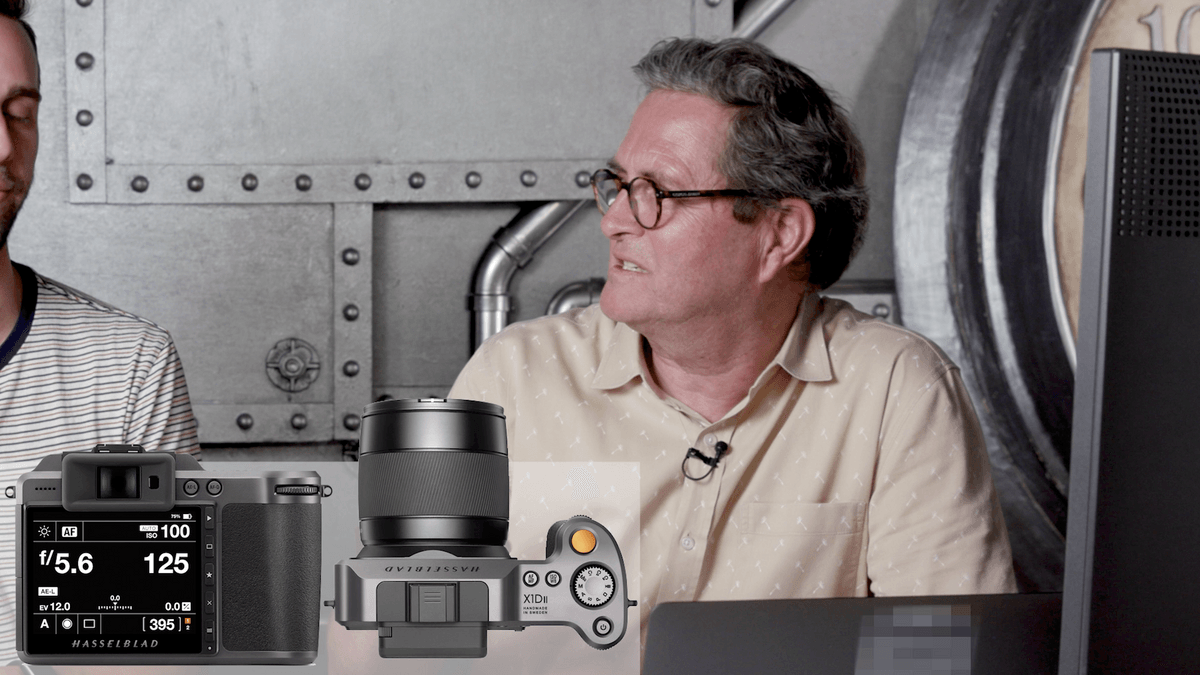 It made me excited to go out and shoot. The Hasselblad is more of a deliberate camera. You can shoot with it on set and shoot portraits. And the color science is pretty amazing.
It made me excited to go out and shoot. The Hasselblad is more of a deliberate camera. You can shoot with it on set and shoot portraits. And the color science is pretty amazing. 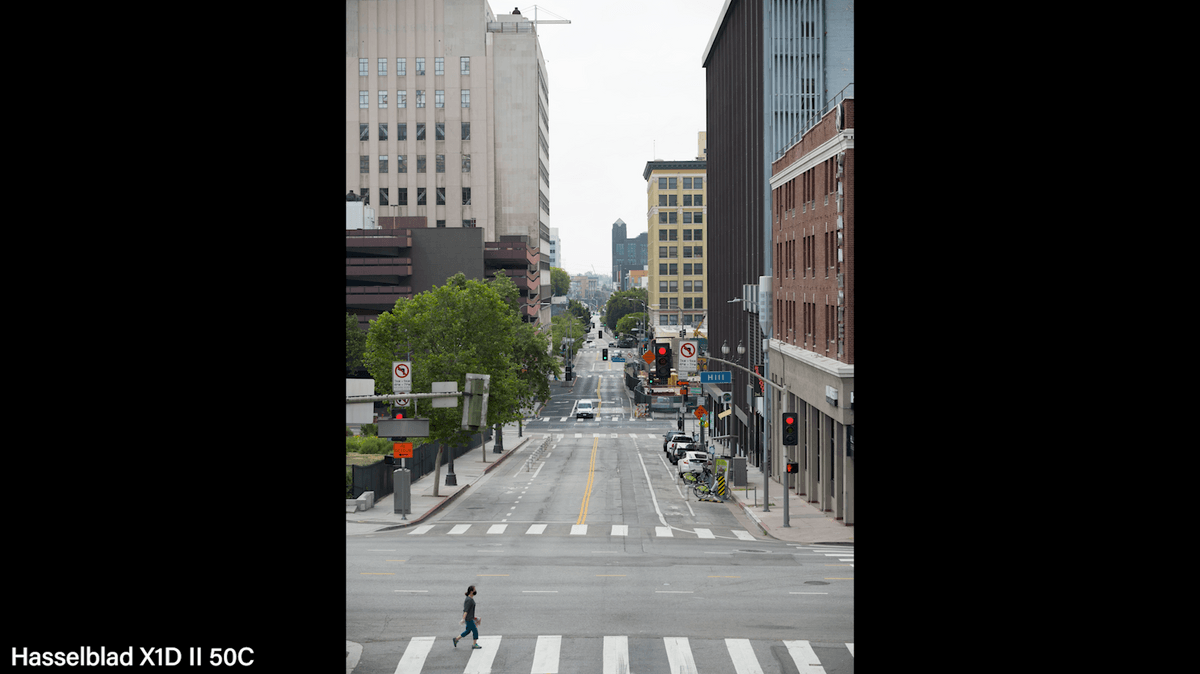 But if you are trying to do more street photography kinds of things that will require more speed, I might lean more towards the Fujifilm.
But if you are trying to do more street photography kinds of things that will require more speed, I might lean more towards the Fujifilm. 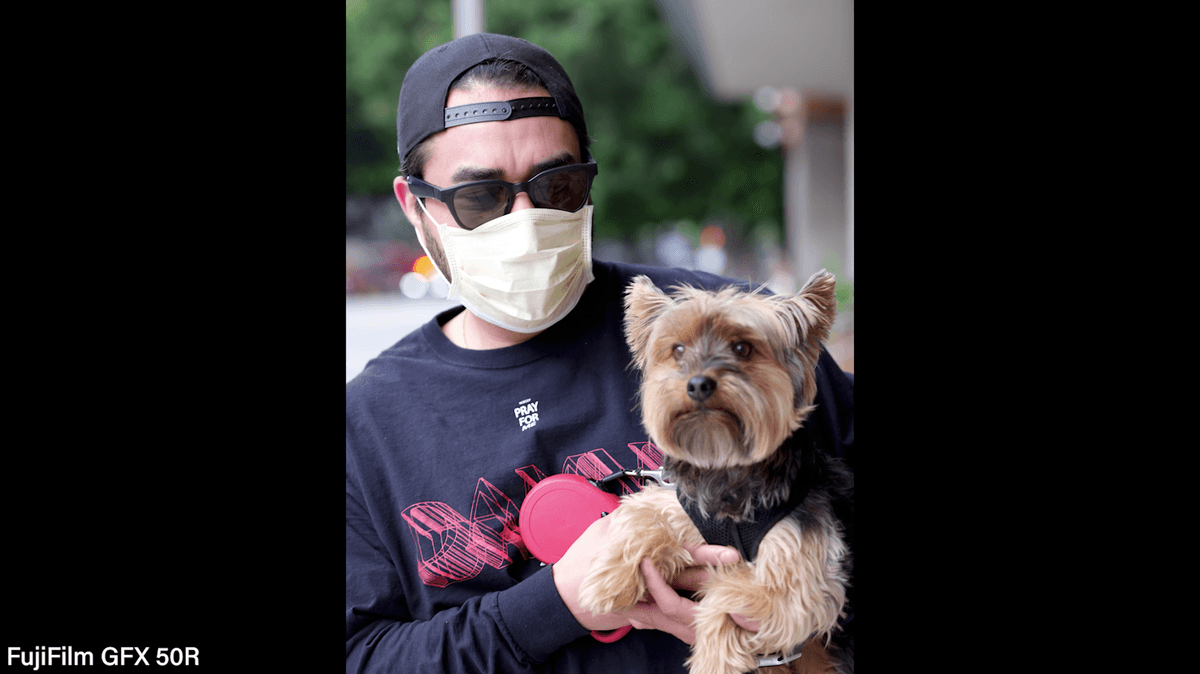 Even though it is bigger, clunkier and harder to carry around, it is just a little bit faster to use. I don’t know if either of these are really street cameras. I was talking to someone who was using the GFX 100 to shoot street portraits and that is a big beast of a camera.
Even though it is bigger, clunkier and harder to carry around, it is just a little bit faster to use. I don’t know if either of these are really street cameras. I was talking to someone who was using the GFX 100 to shoot street portraits and that is a big beast of a camera.
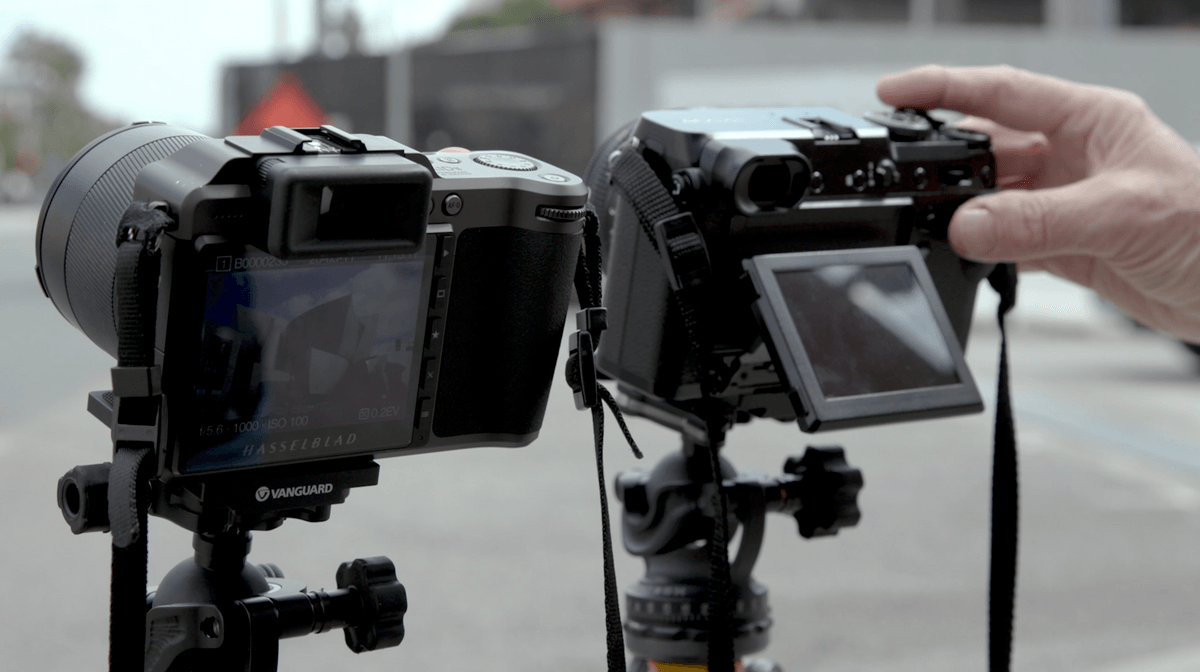 These are very competitive head to head. They both have great, strong image qualities. They capture great detail and great color. Hasselblad may beat out the Fujifilm when it comes to color. It also edges out a little bit in the ergonomics in being able to use is.
These are very competitive head to head. They both have great, strong image qualities. They capture great detail and great color. Hasselblad may beat out the Fujifilm when it comes to color. It also edges out a little bit in the ergonomics in being able to use is. 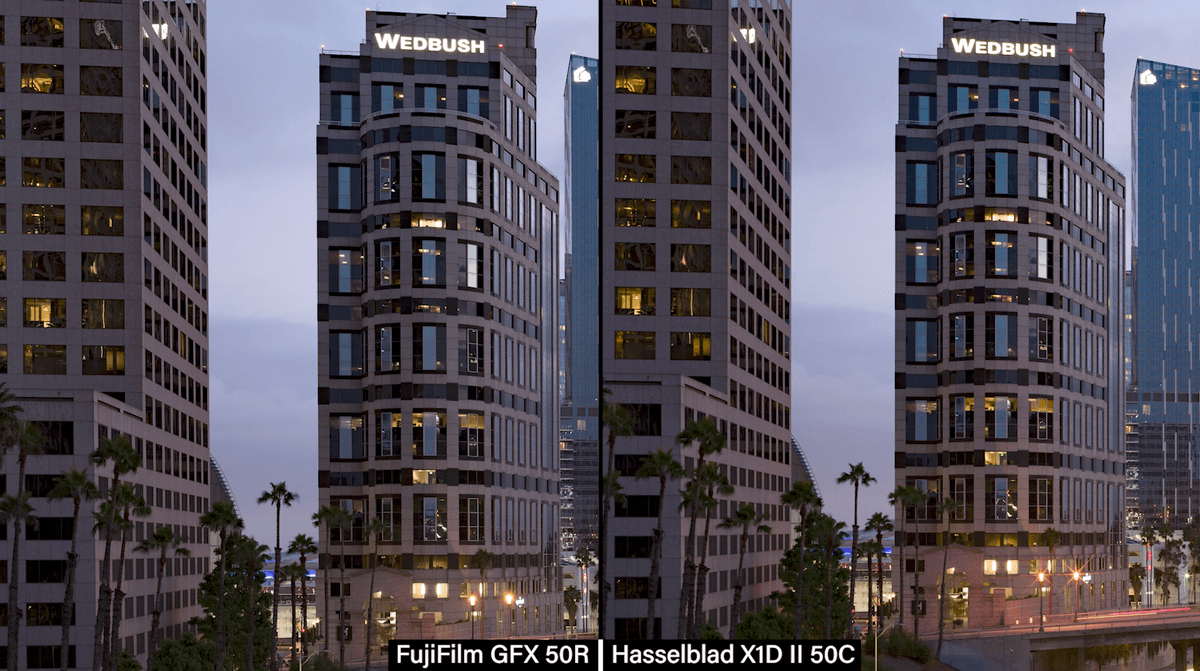 Whereas the Fujifilm edges out in the autofocus. It is hard to call a winner here by any means. Although for me, the knockout for me is the Hasselblad’s ability to sync with the strobe.
Whereas the Fujifilm edges out in the autofocus. It is hard to call a winner here by any means. Although for me, the knockout for me is the Hasselblad’s ability to sync with the strobe. 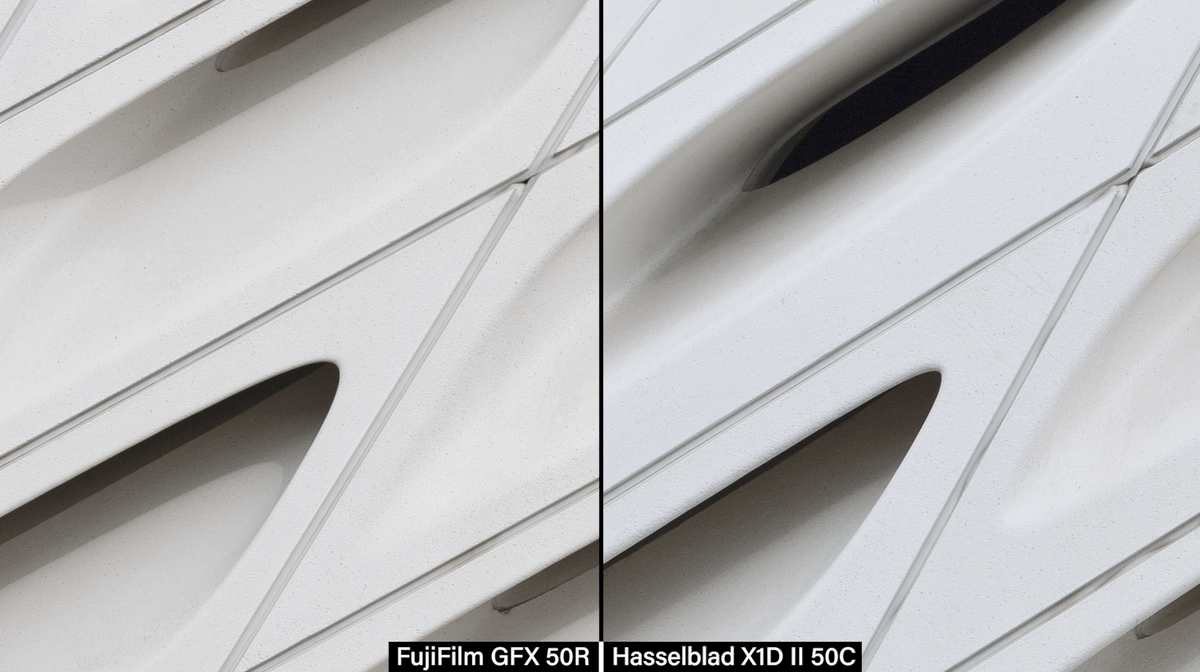 That’s because I shoot a lot of stuff on set. I try to combine strobes with ambient all of the time. And that is a huge advantage. So two great cameras! I hope you enjoyed the look at these two cameras. More camera comparisons to come.
That’s because I shoot a lot of stuff on set. I try to combine strobes with ambient all of the time. And that is a huge advantage. So two great cameras! I hope you enjoyed the look at these two cameras. More camera comparisons to come.
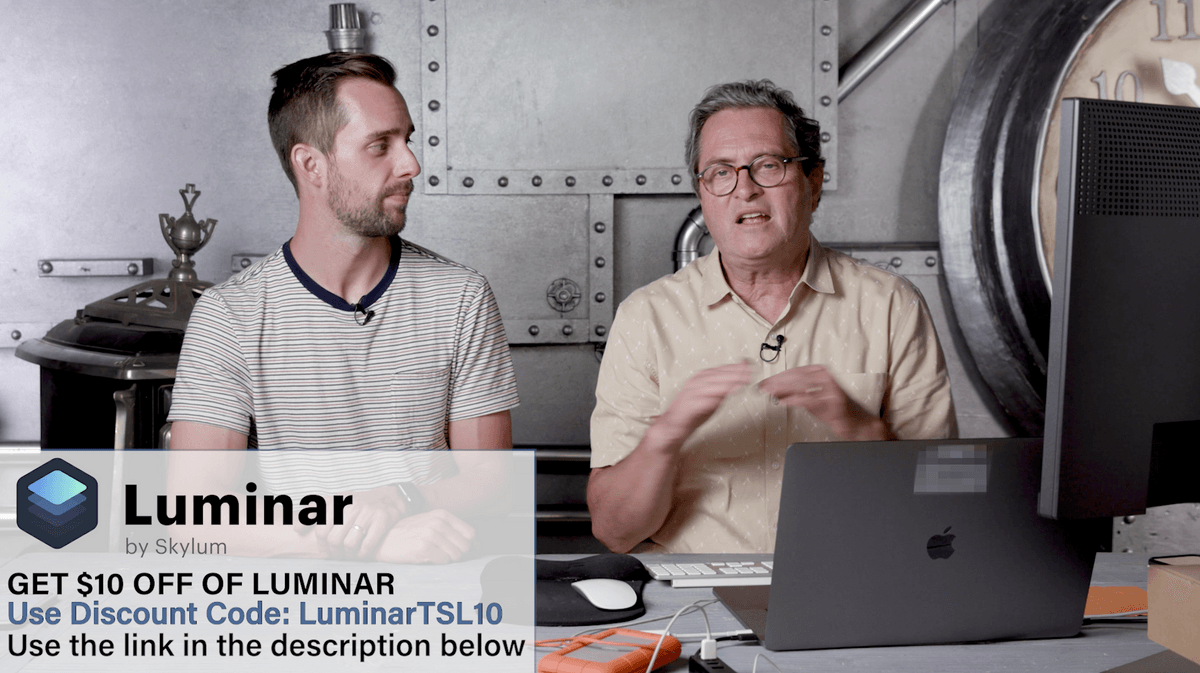
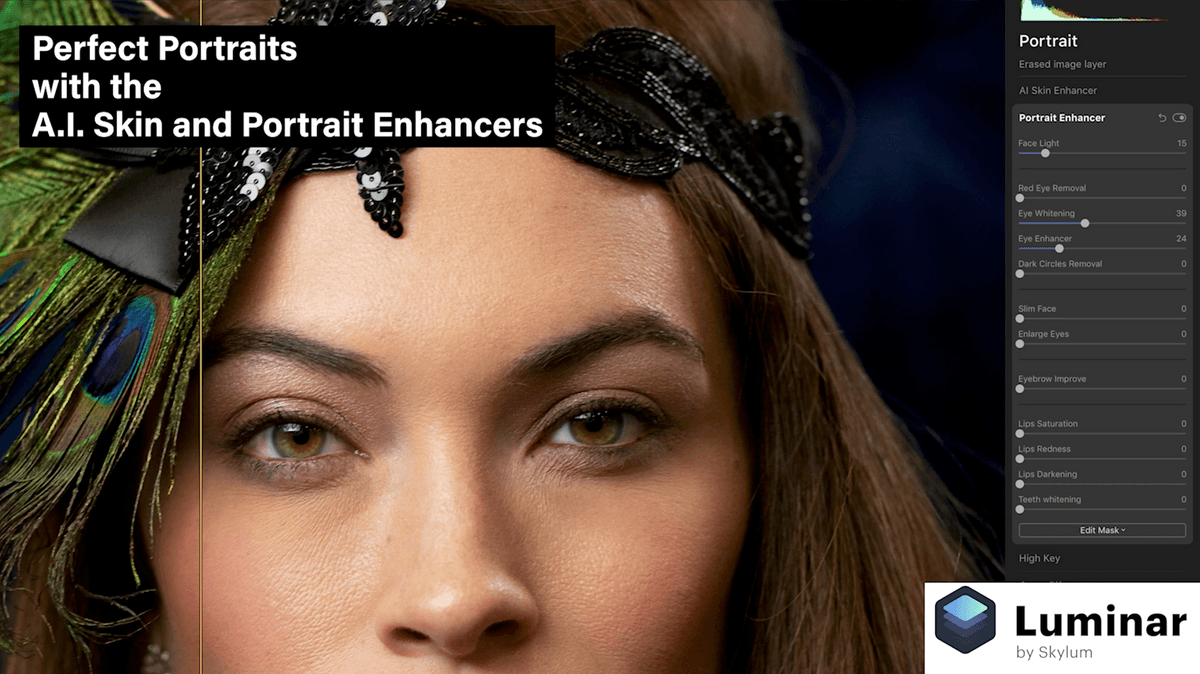 Make sure you subscribe to our YouTube Channel: YouTube.com/TheSlantedLens
Make sure you subscribe to our YouTube Channel: YouTube.com/TheSlantedLens
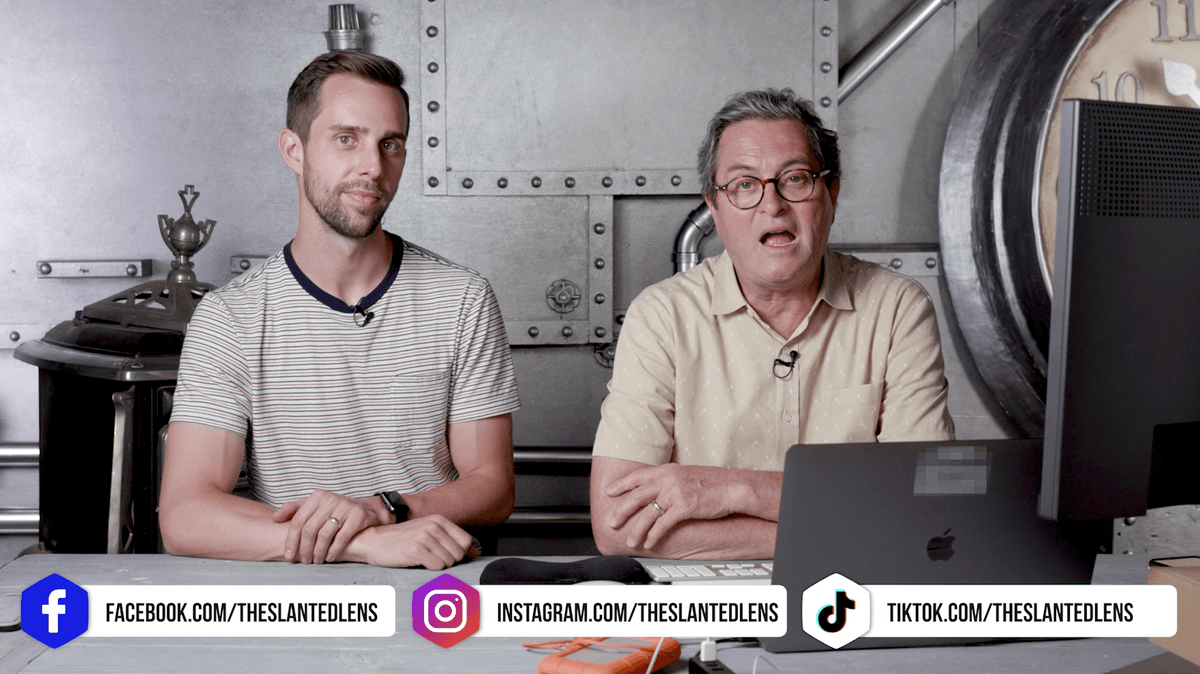 Follow us on Facebook, Instagram, Twitter and TikTok @theslantedlens.
Follow us on Facebook, Instagram, Twitter and TikTok @theslantedlens.